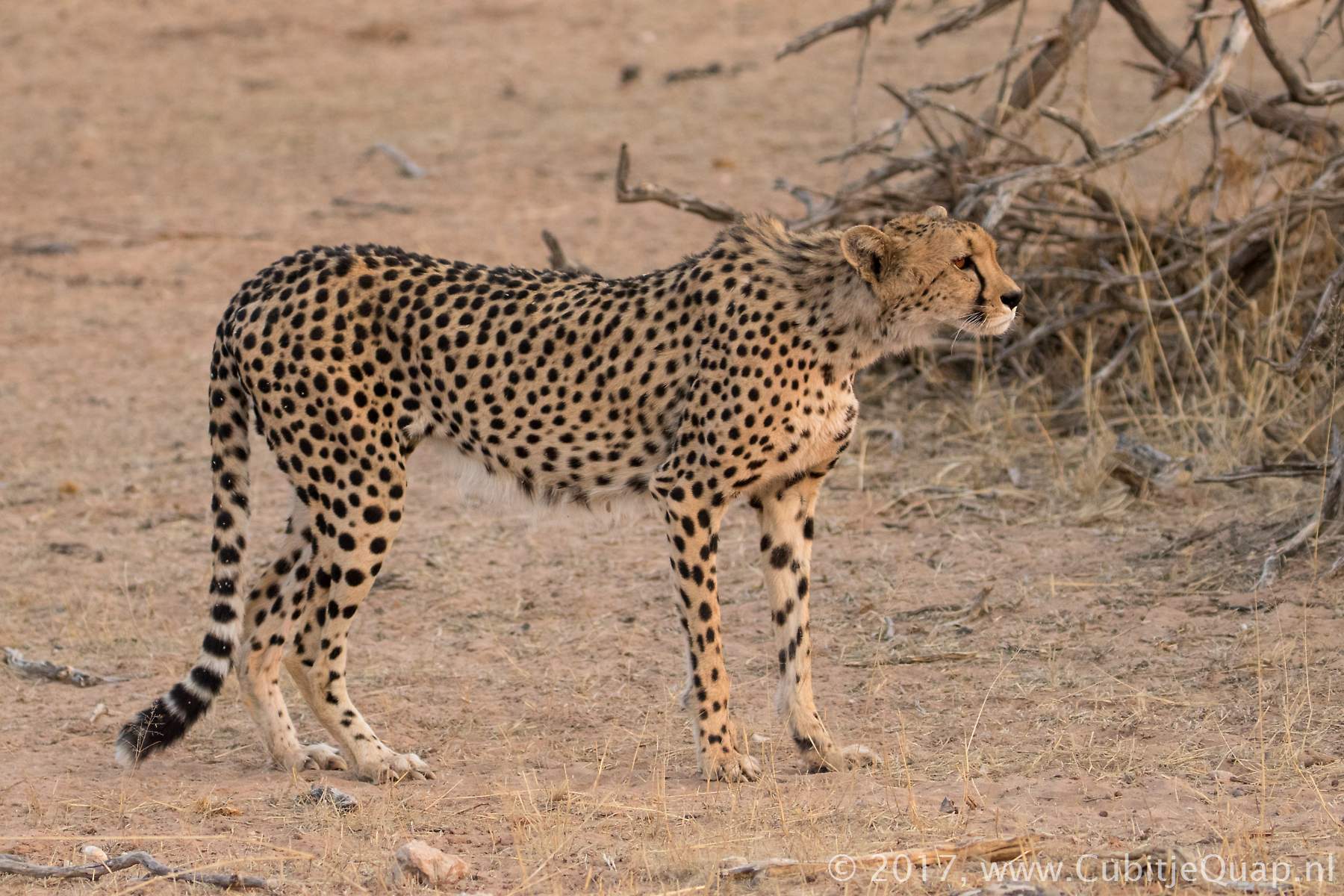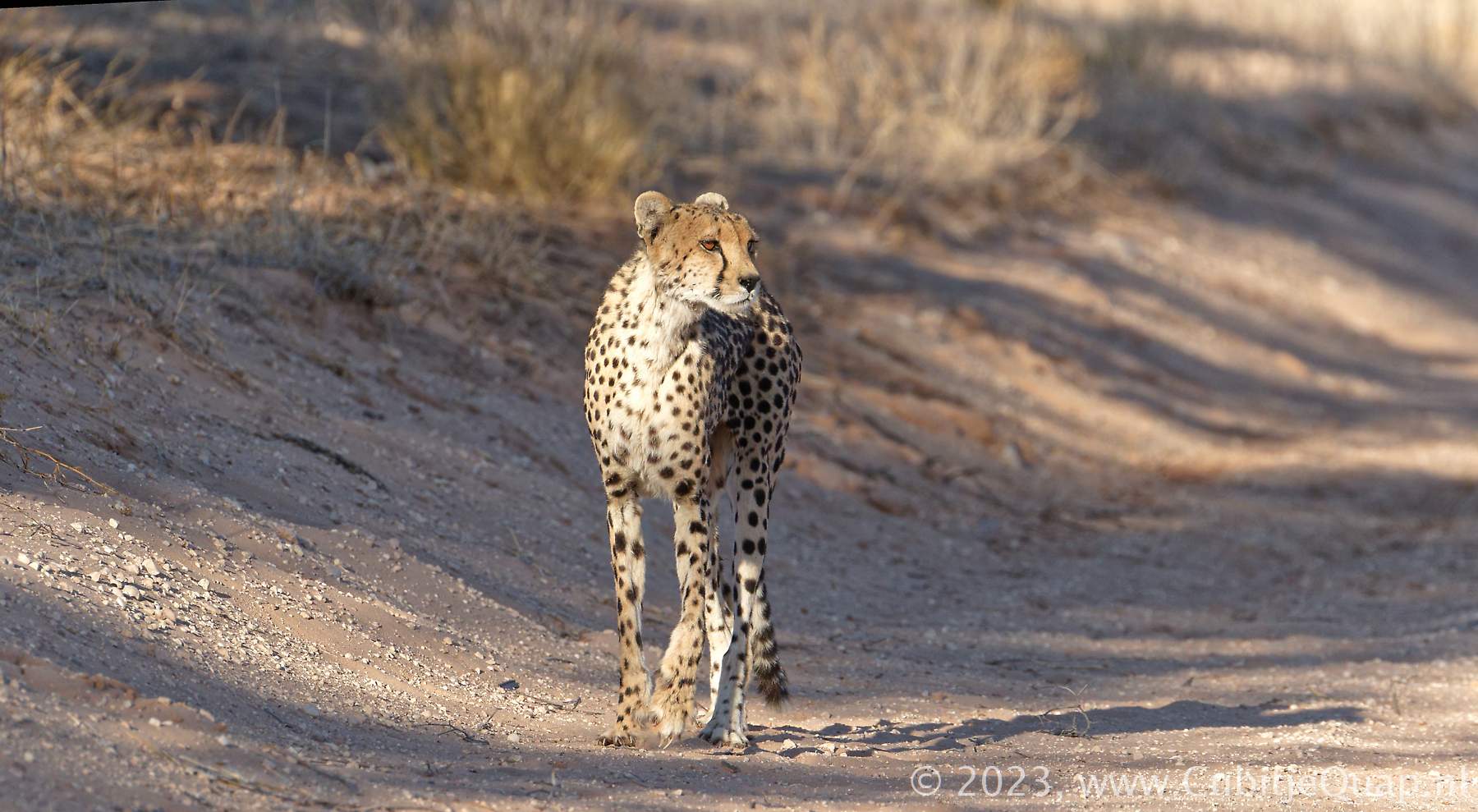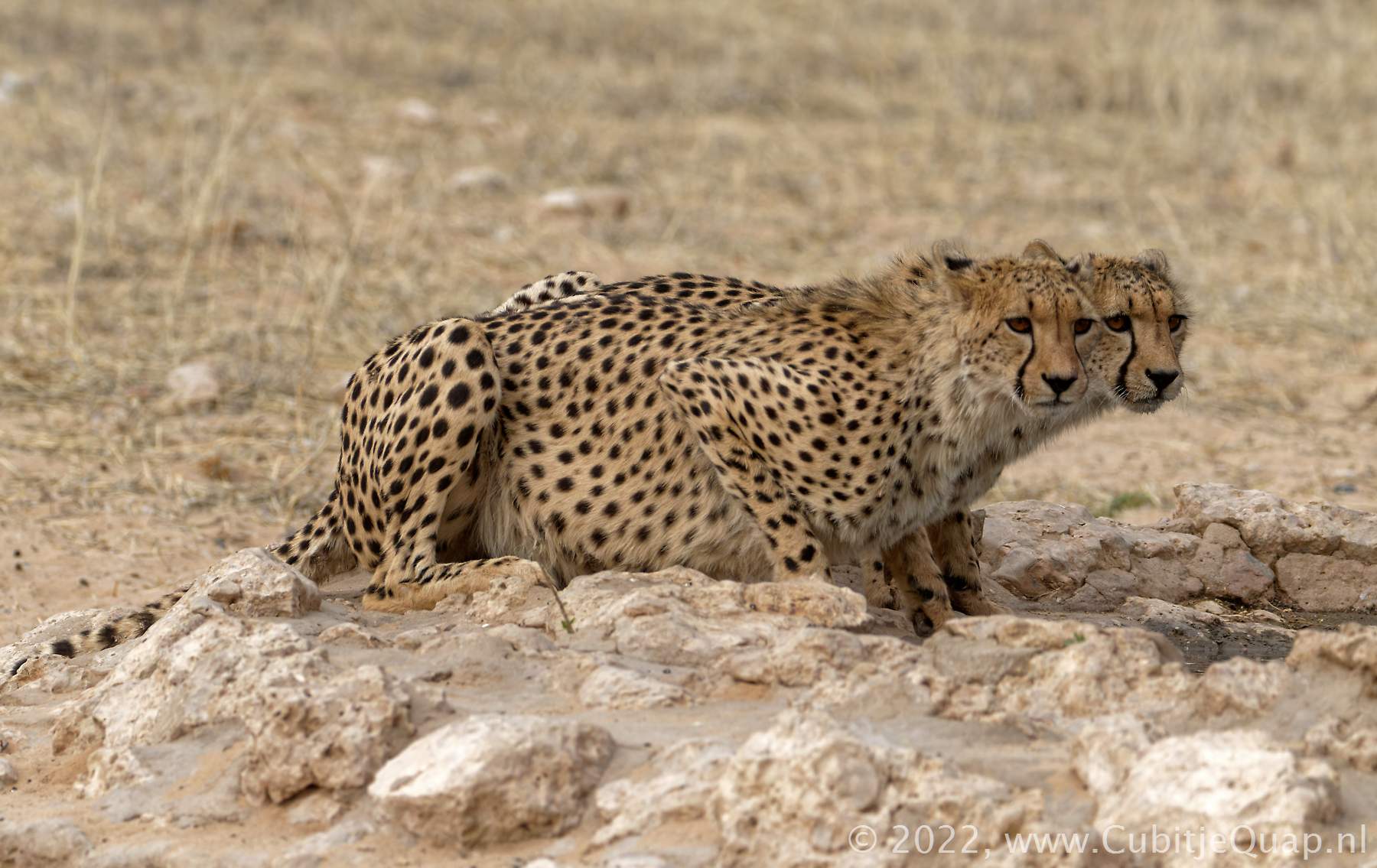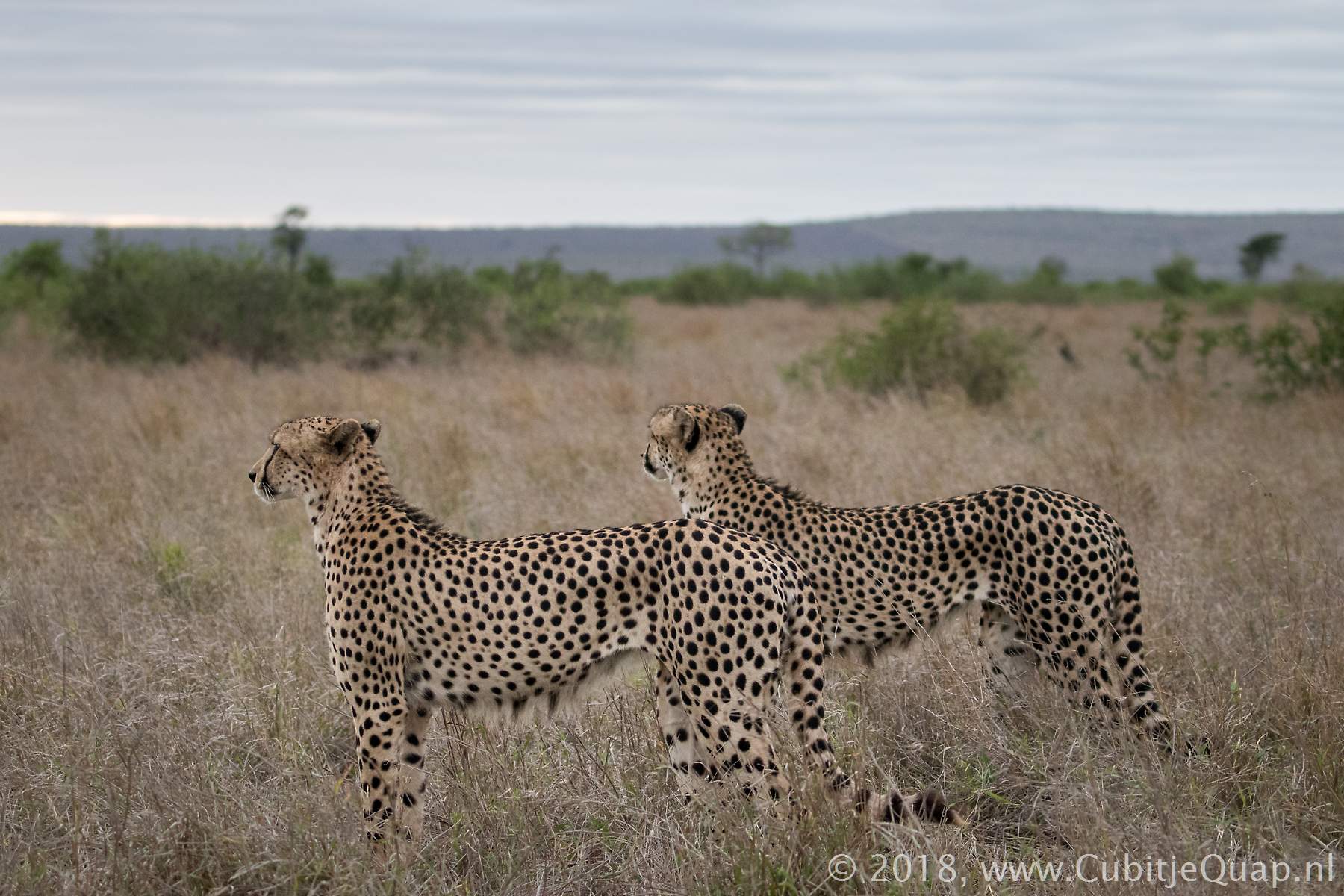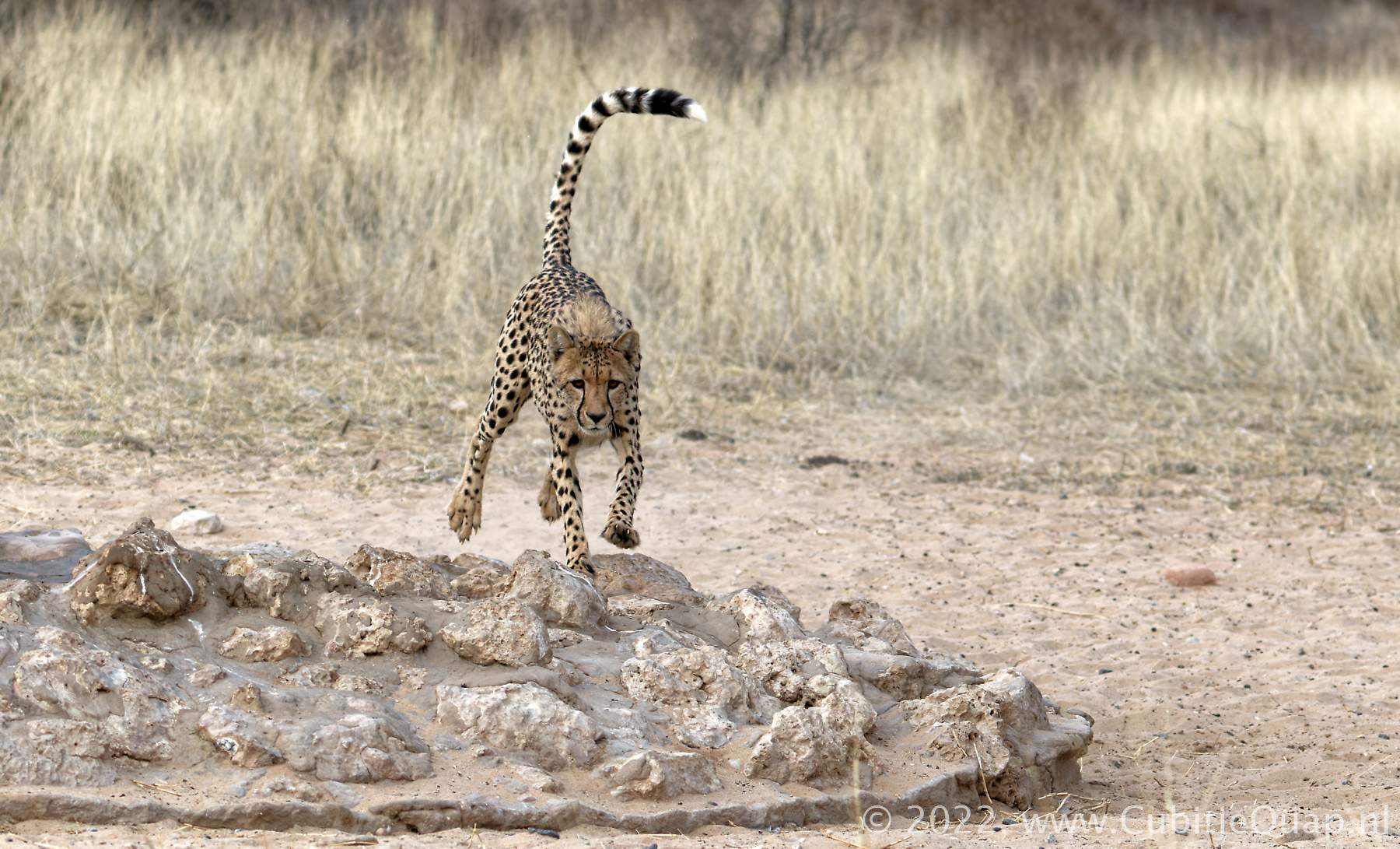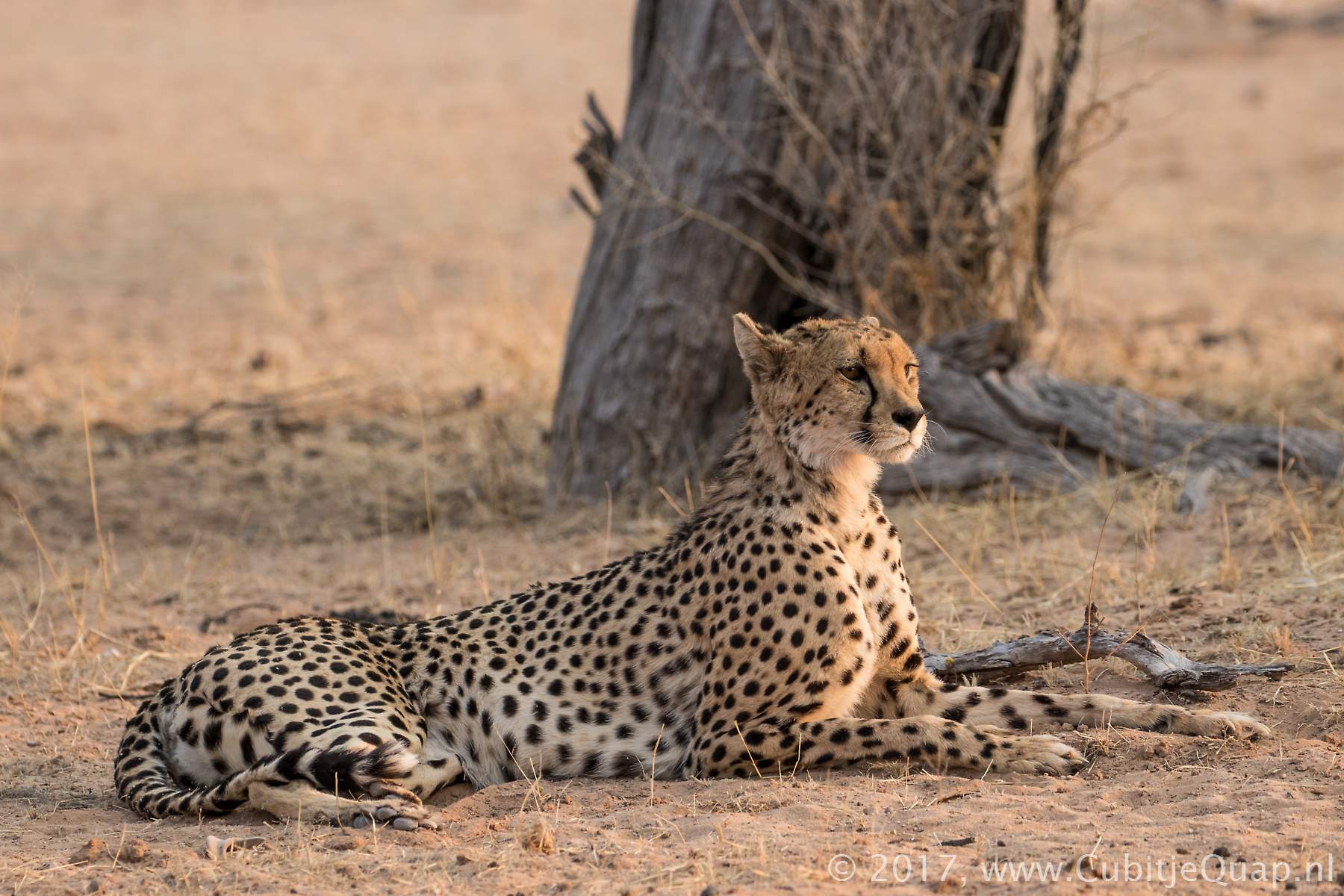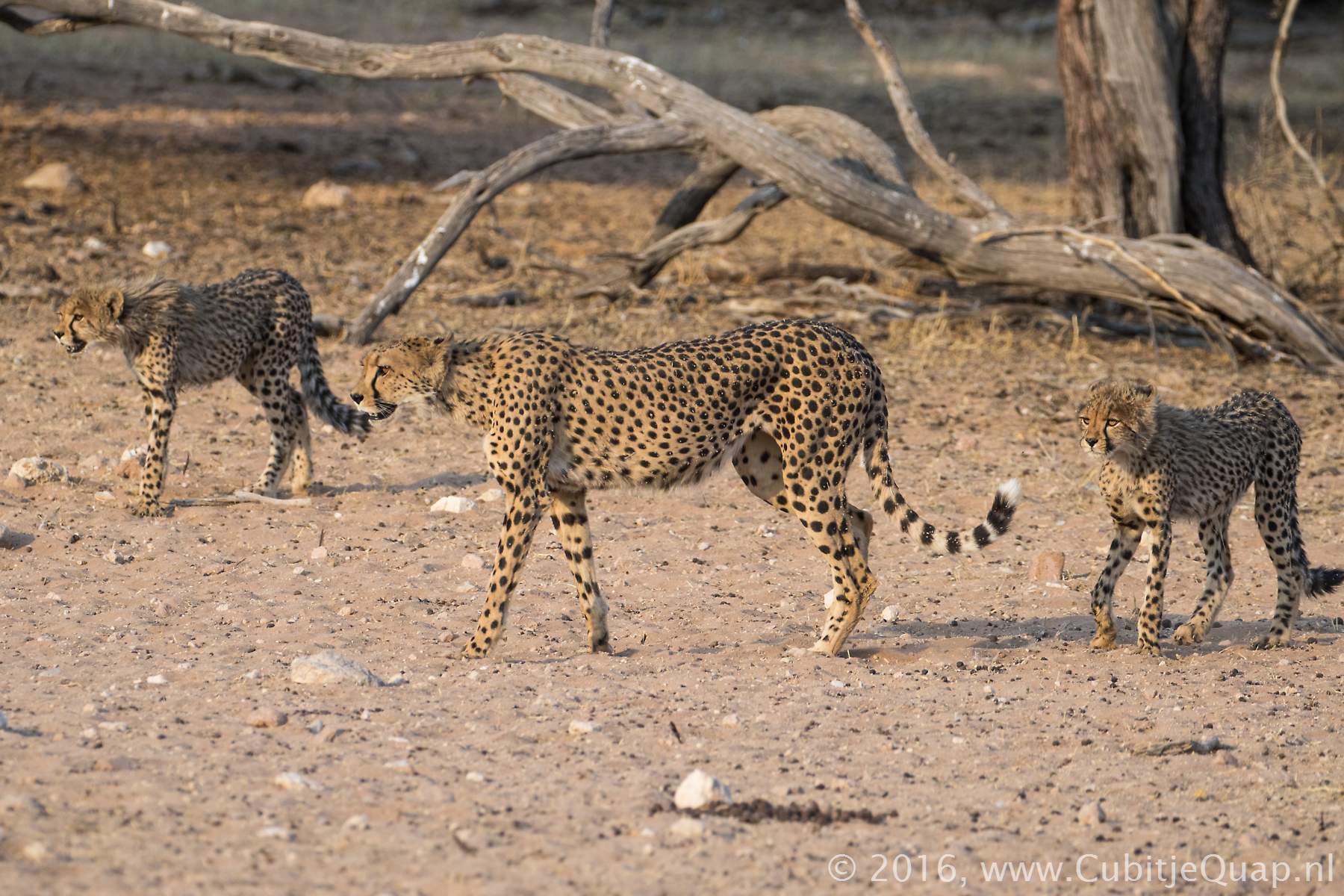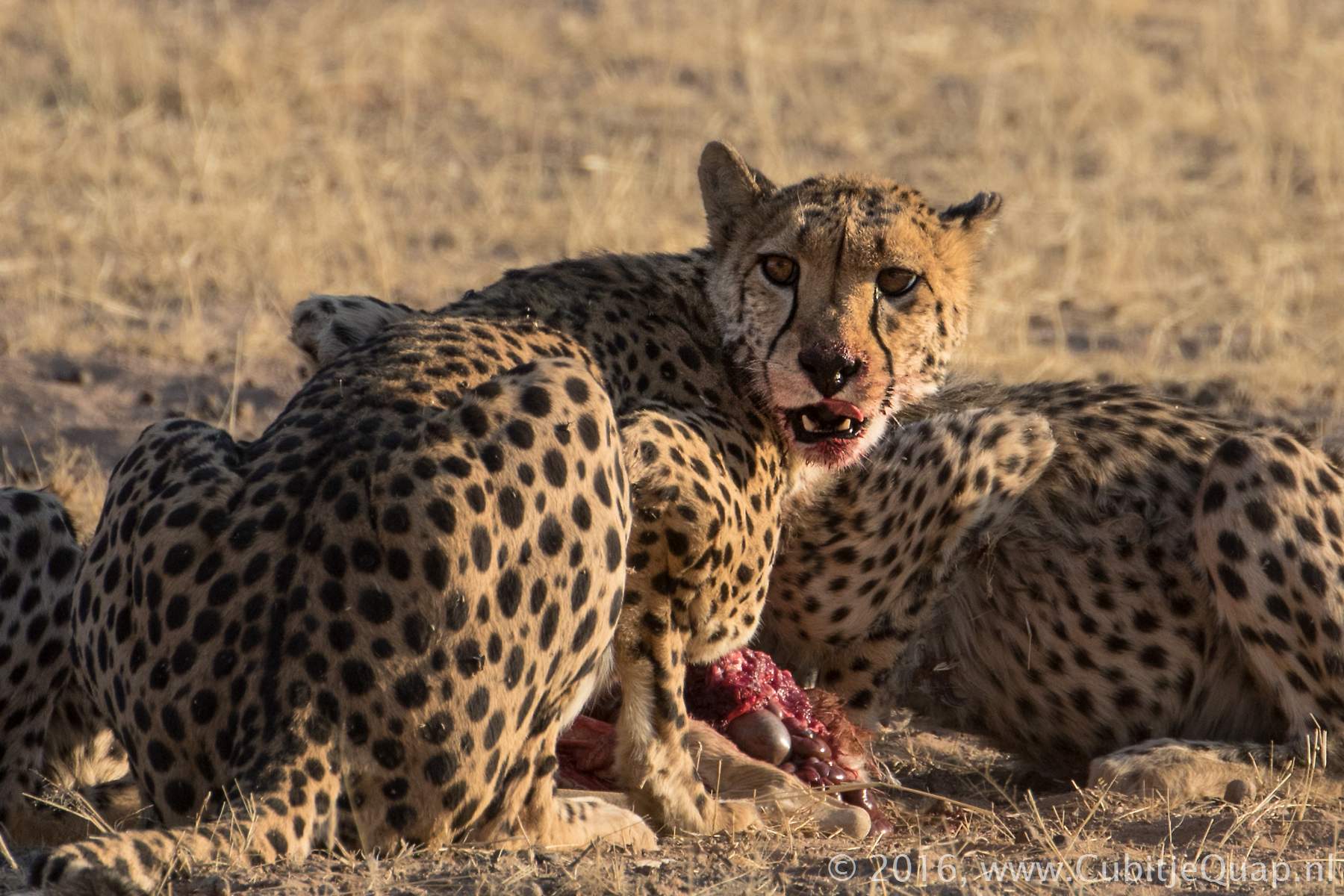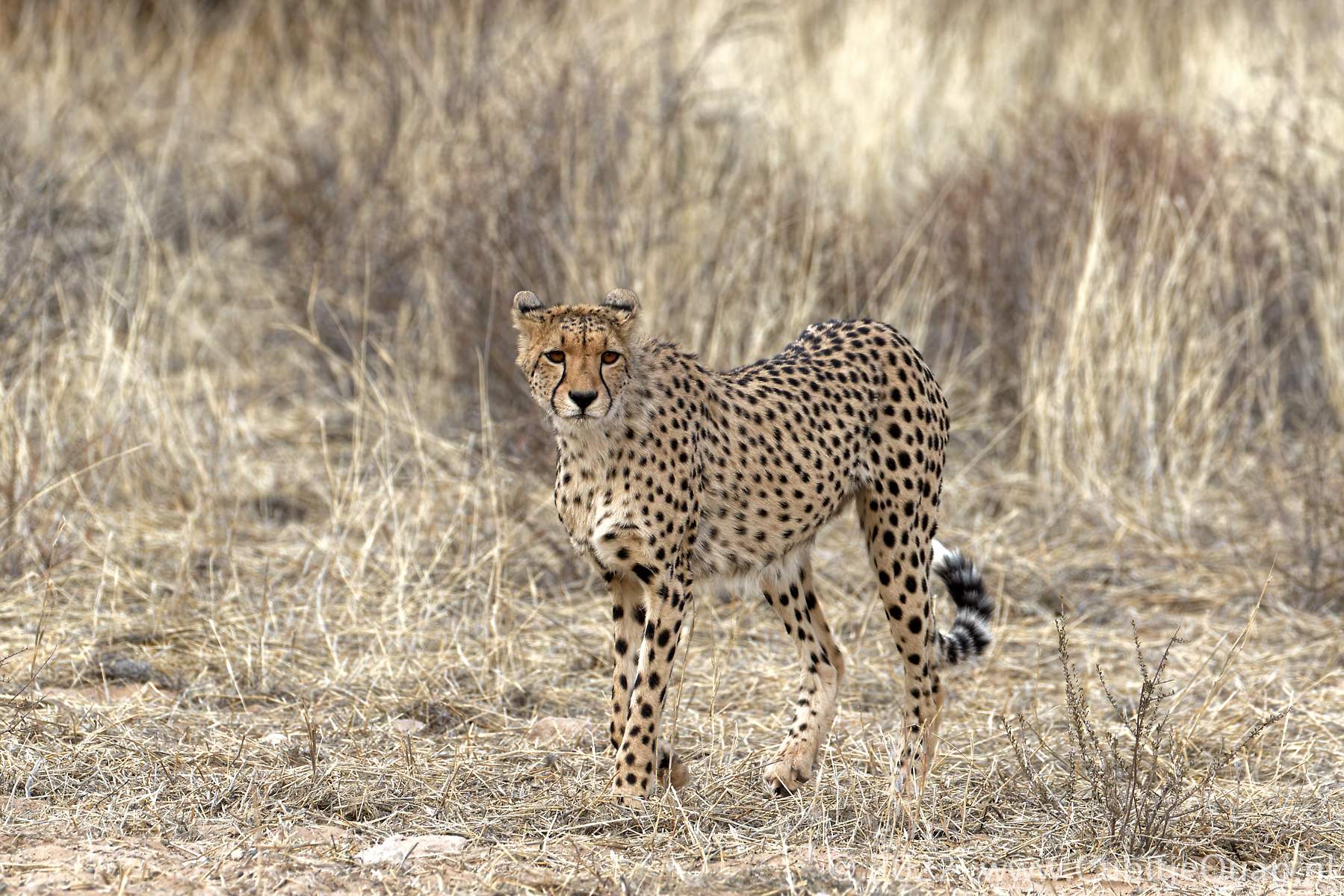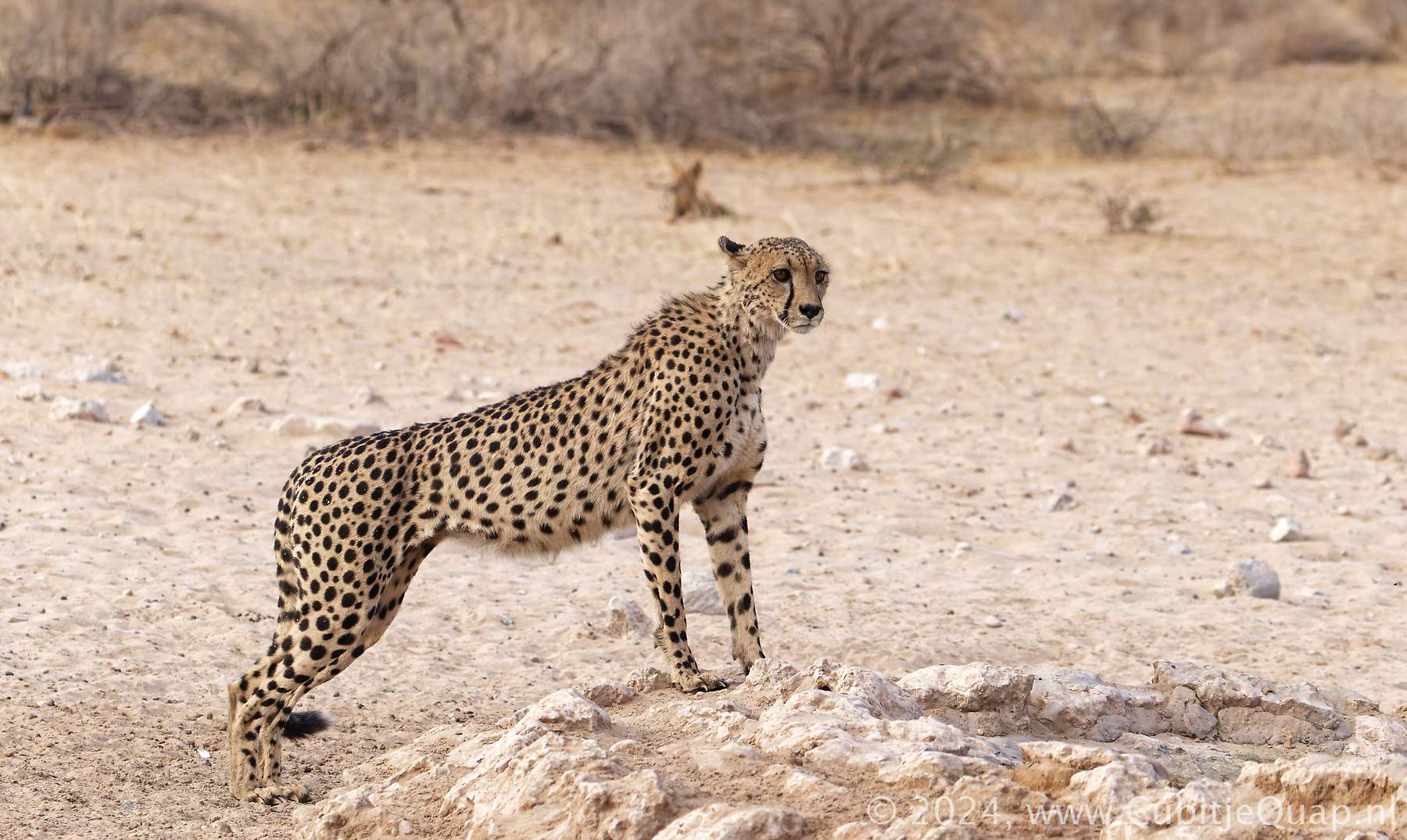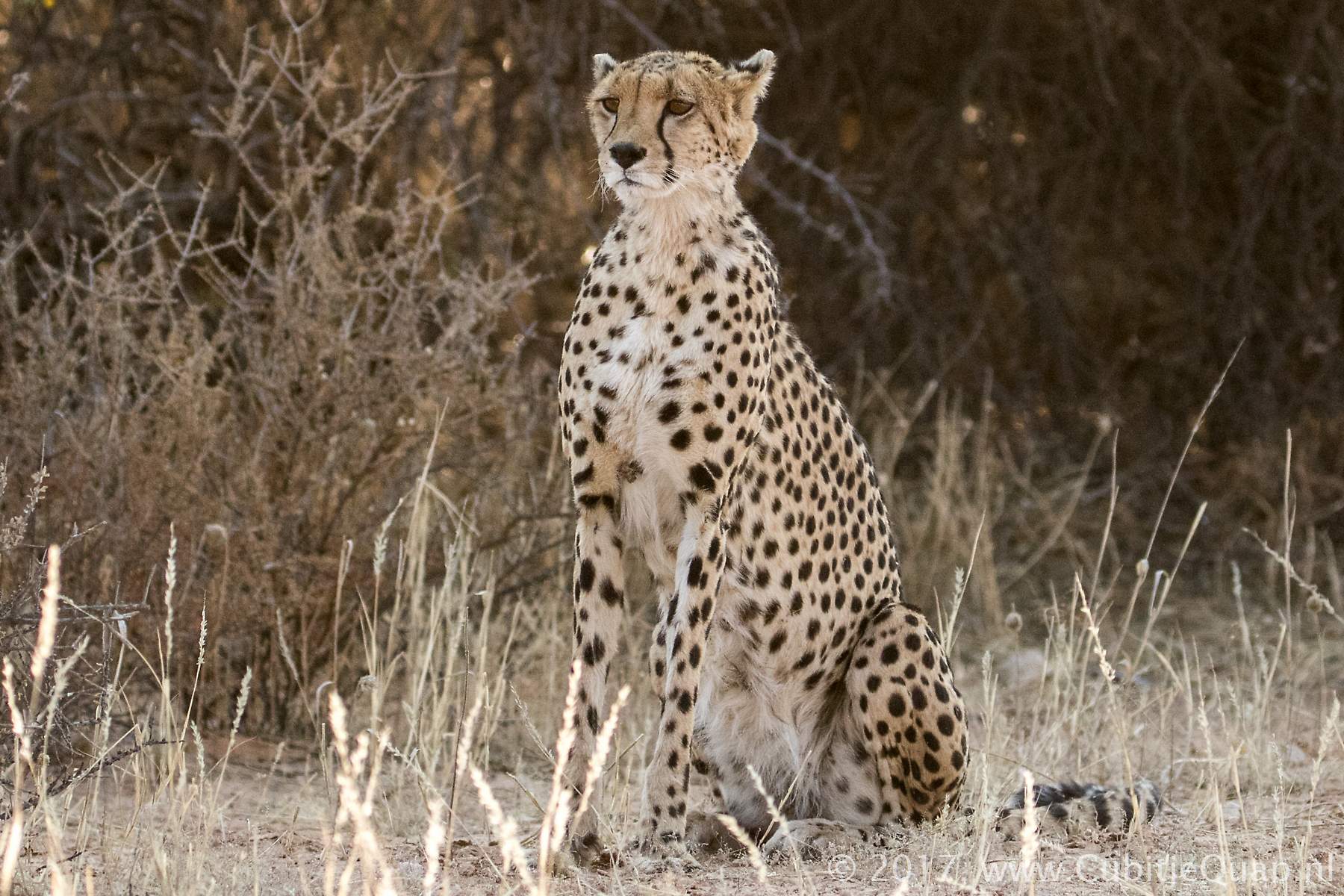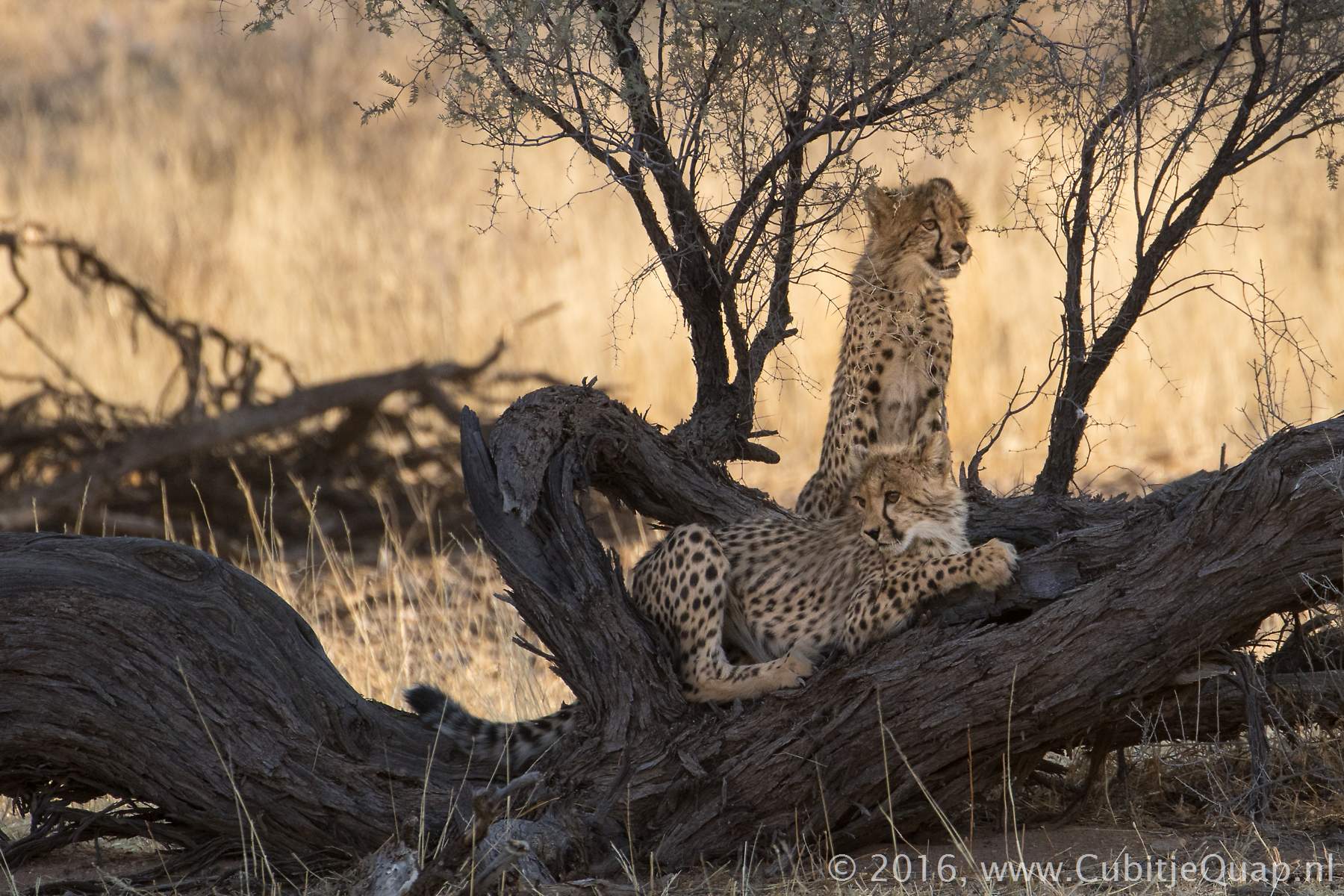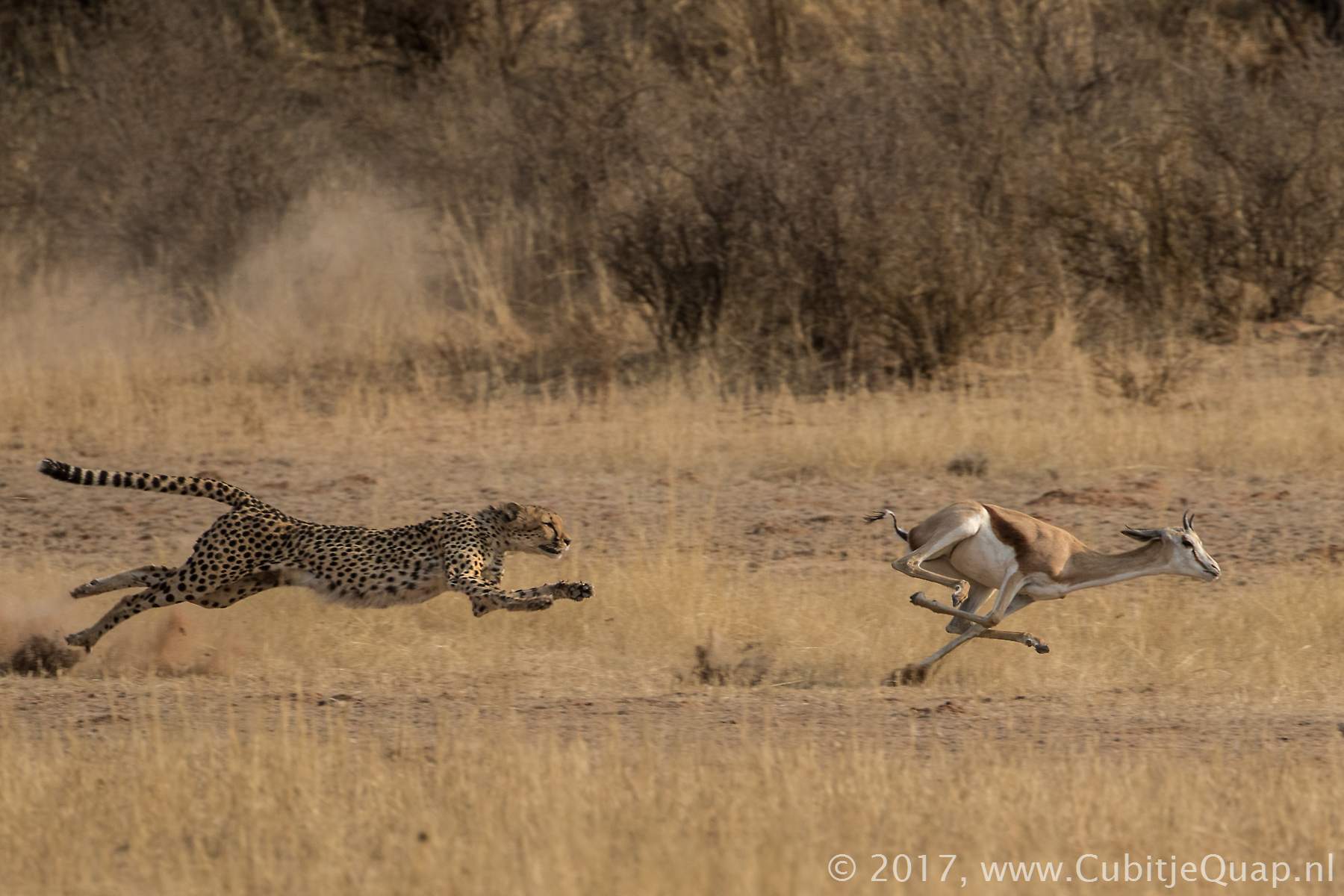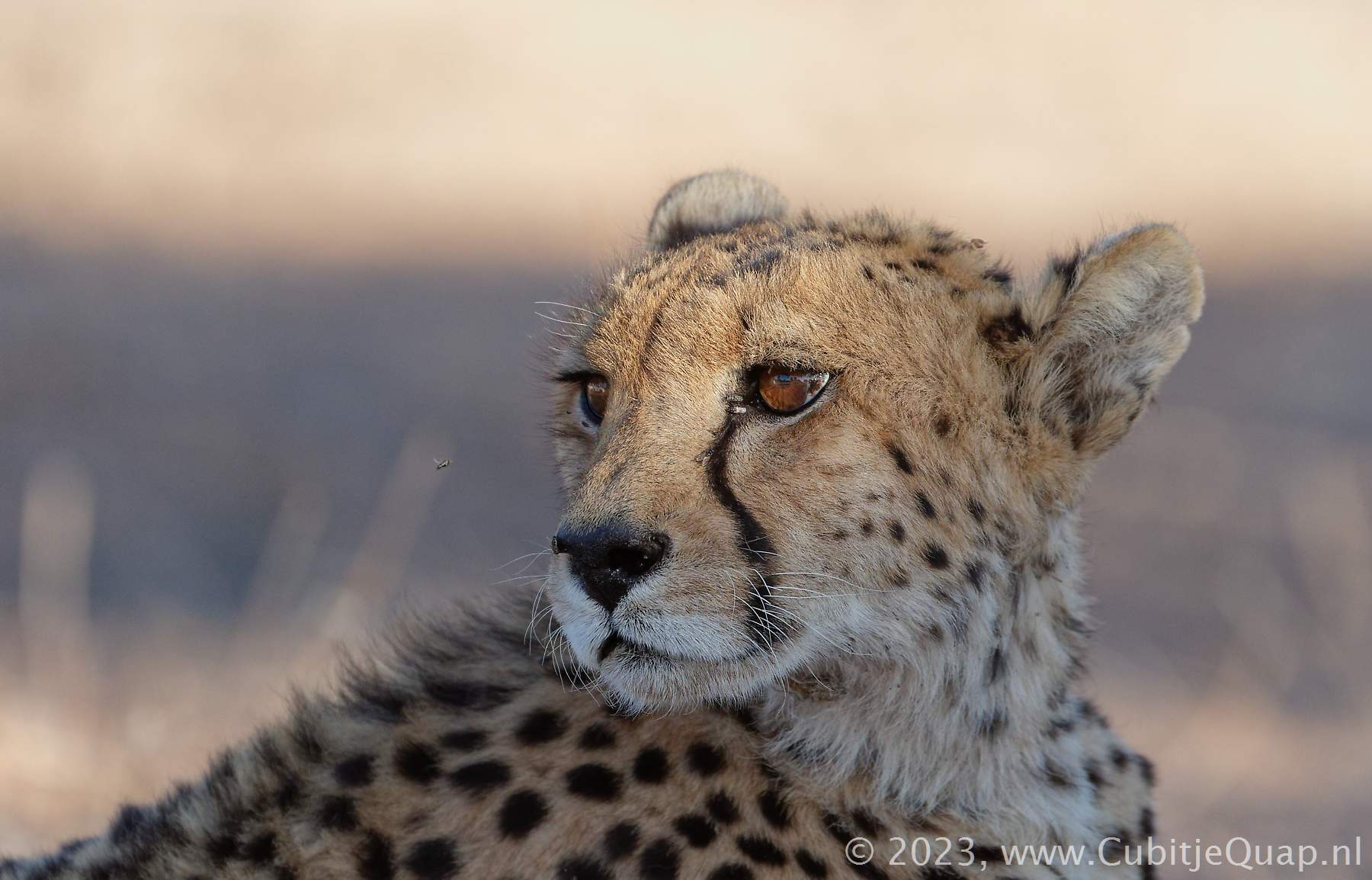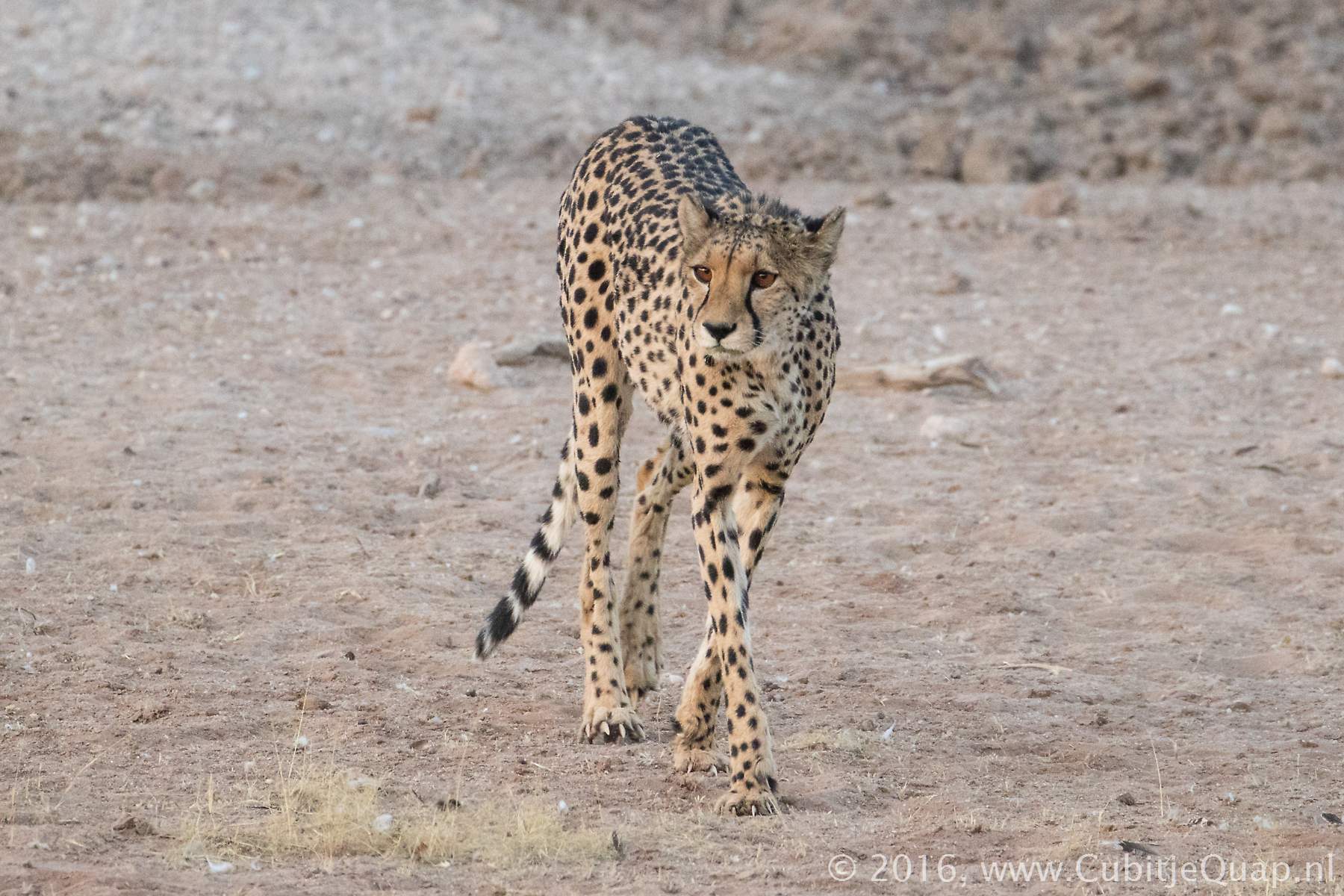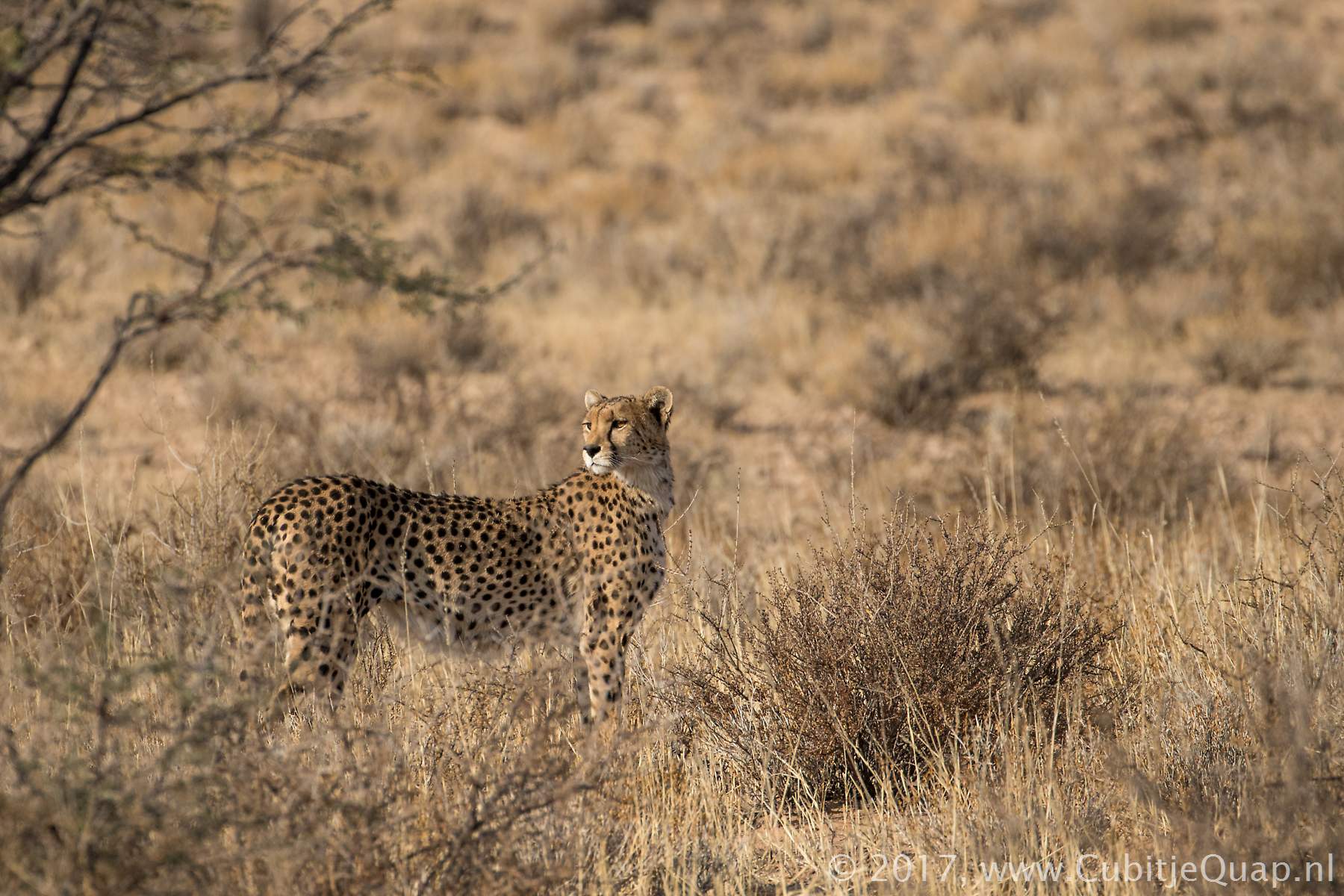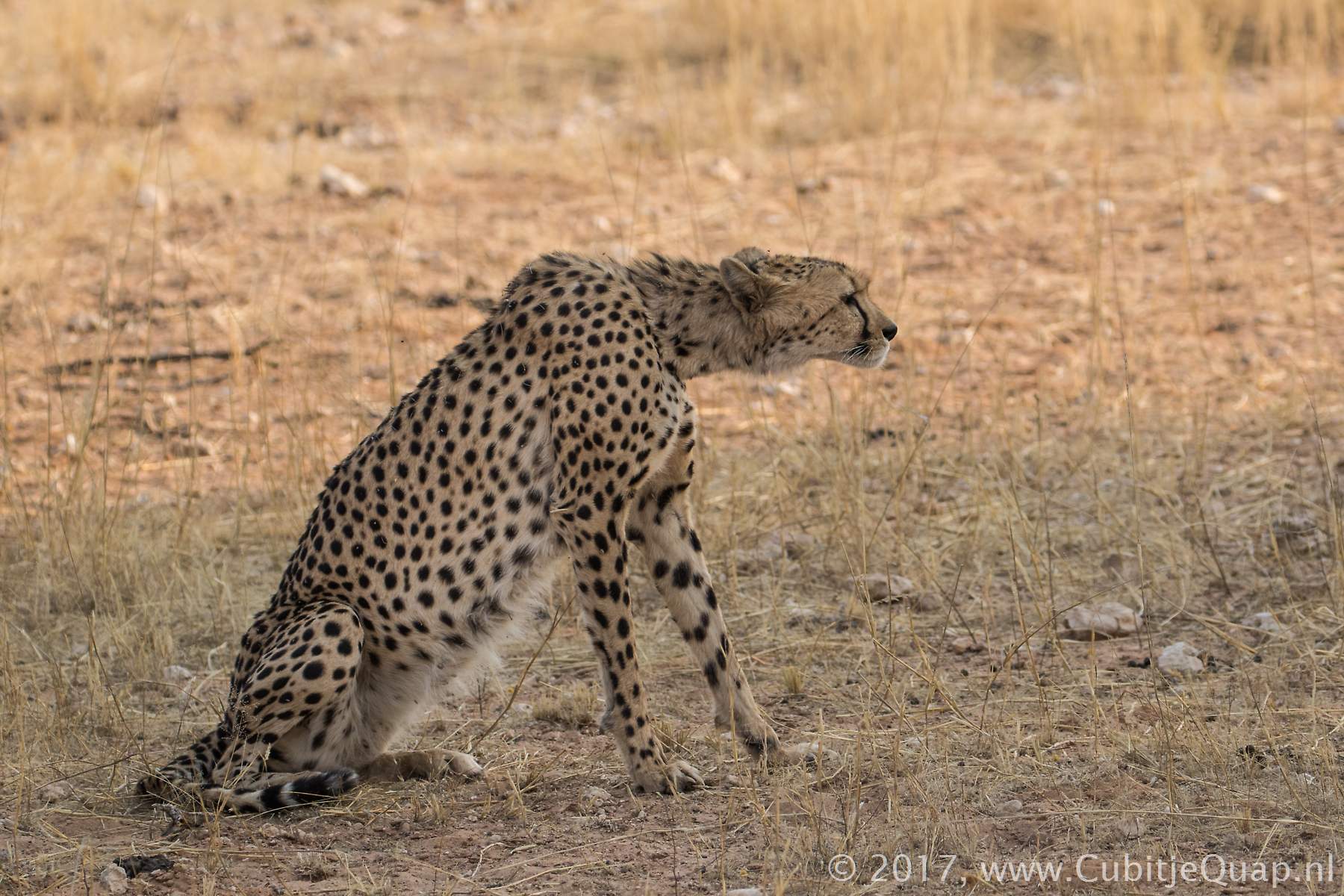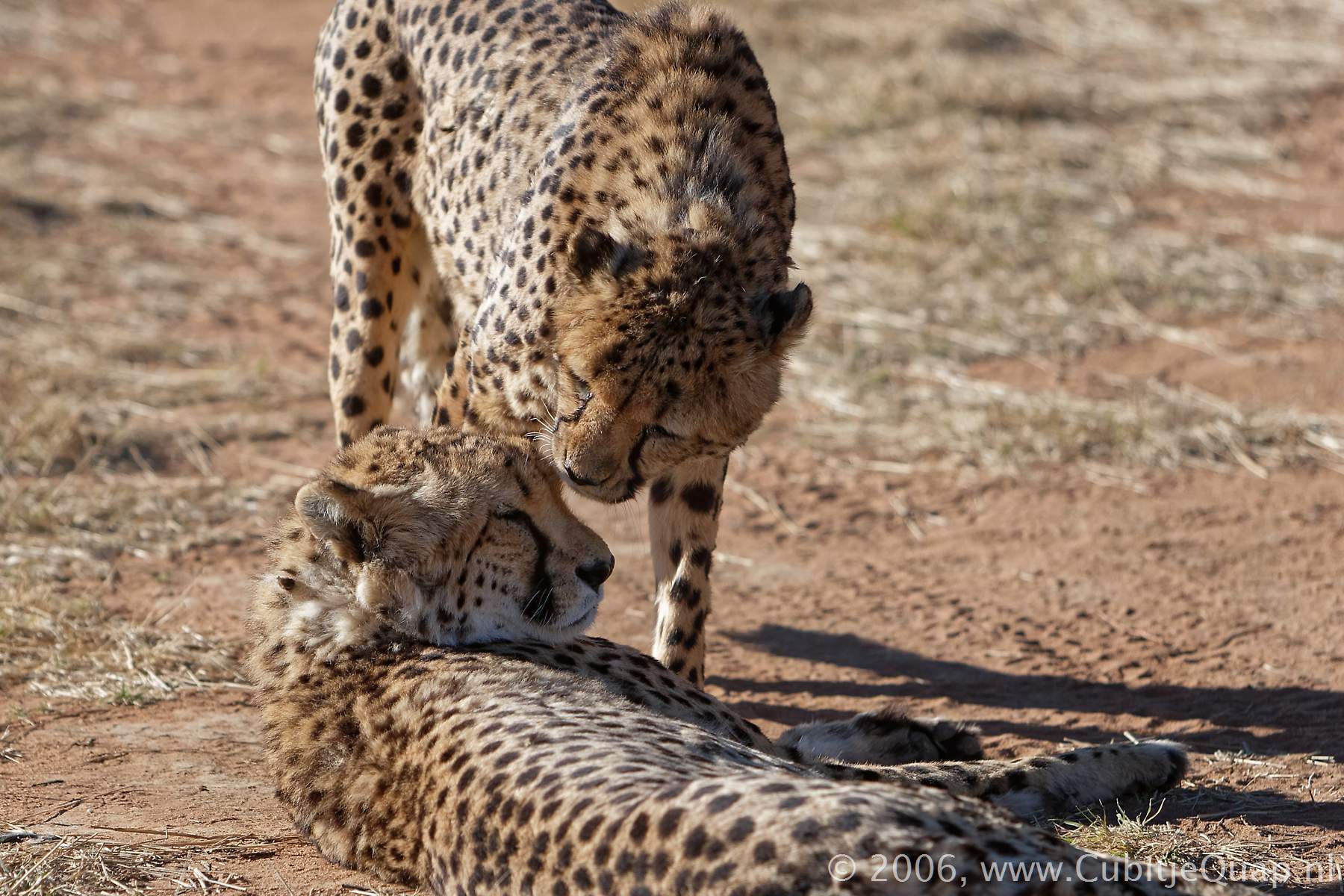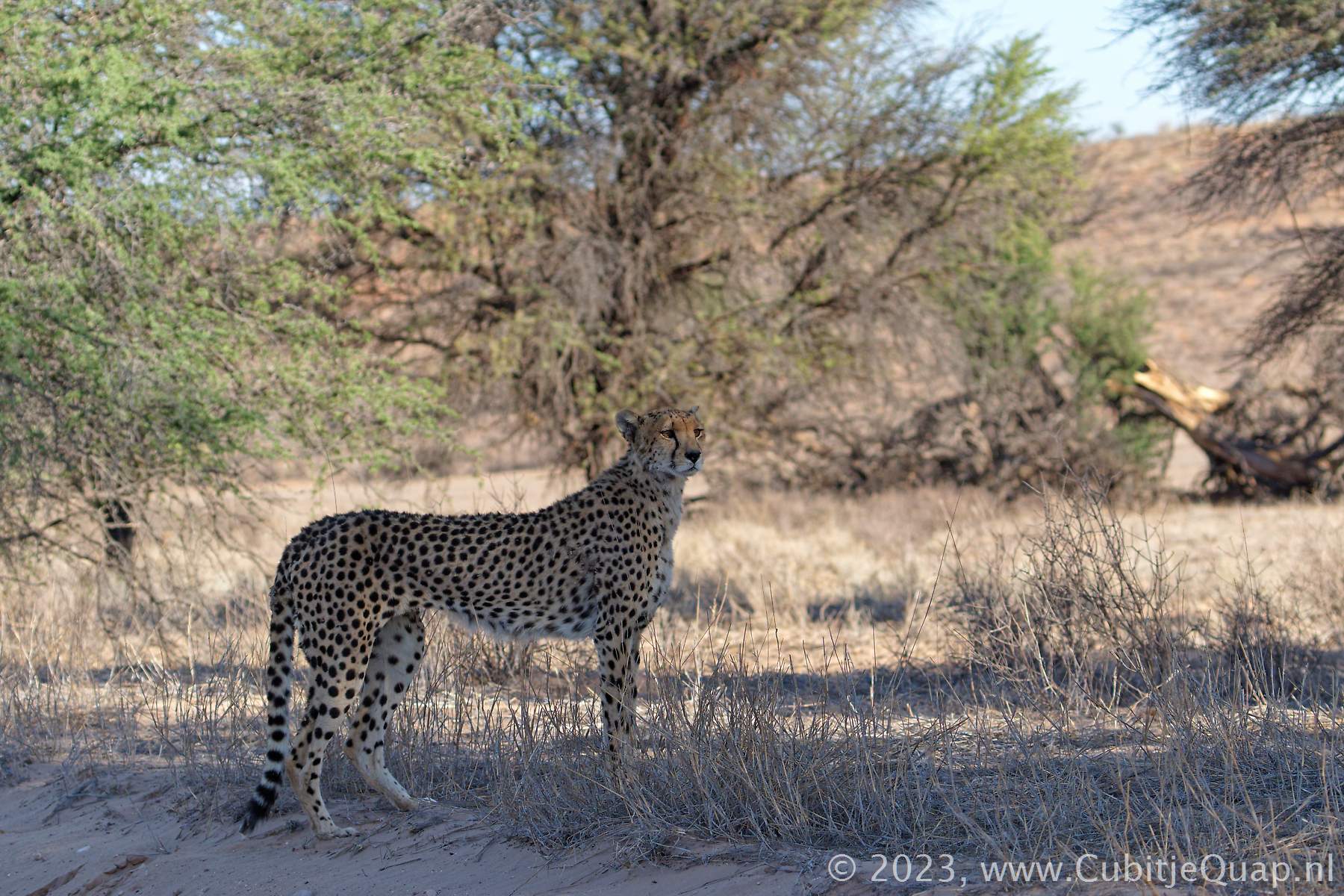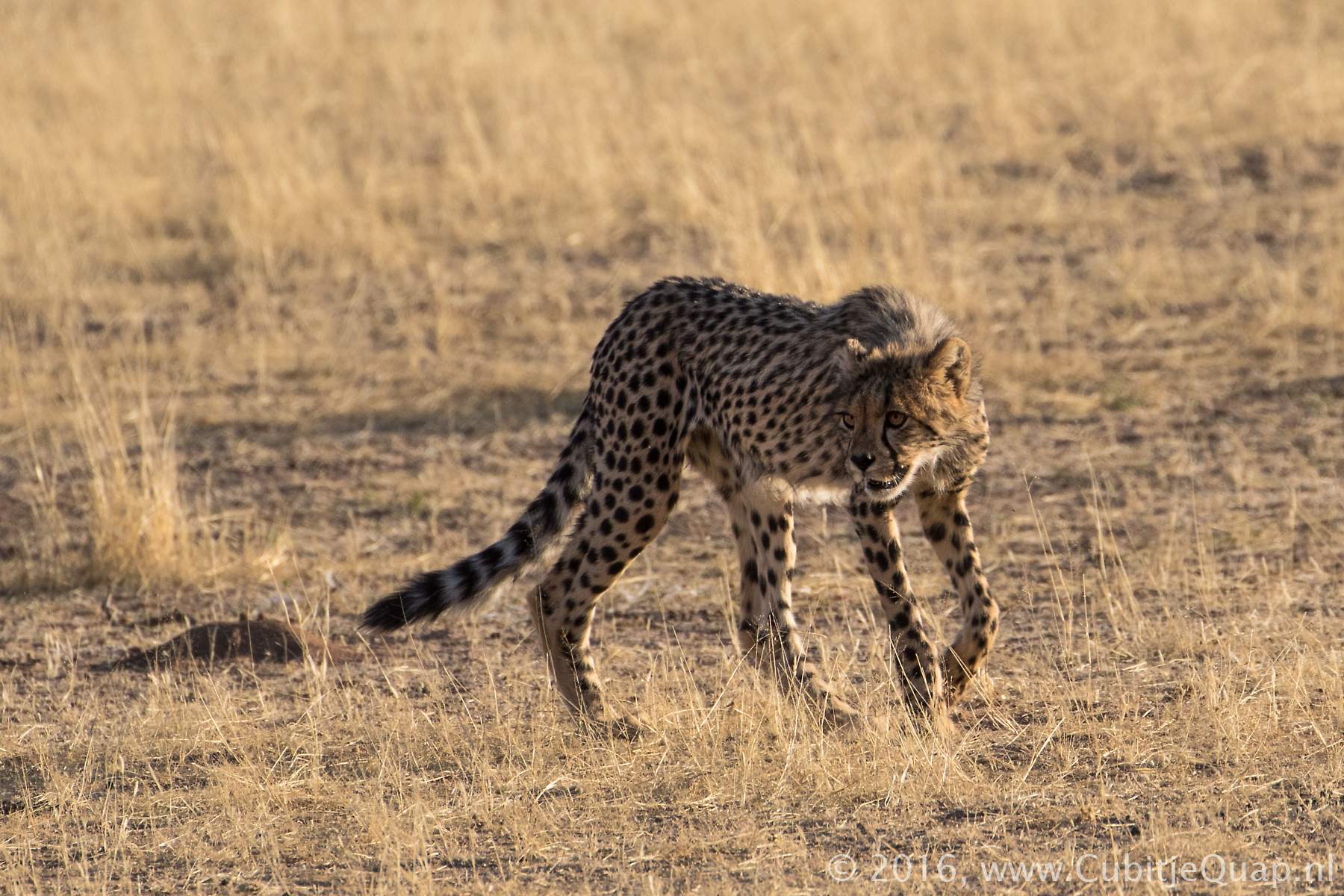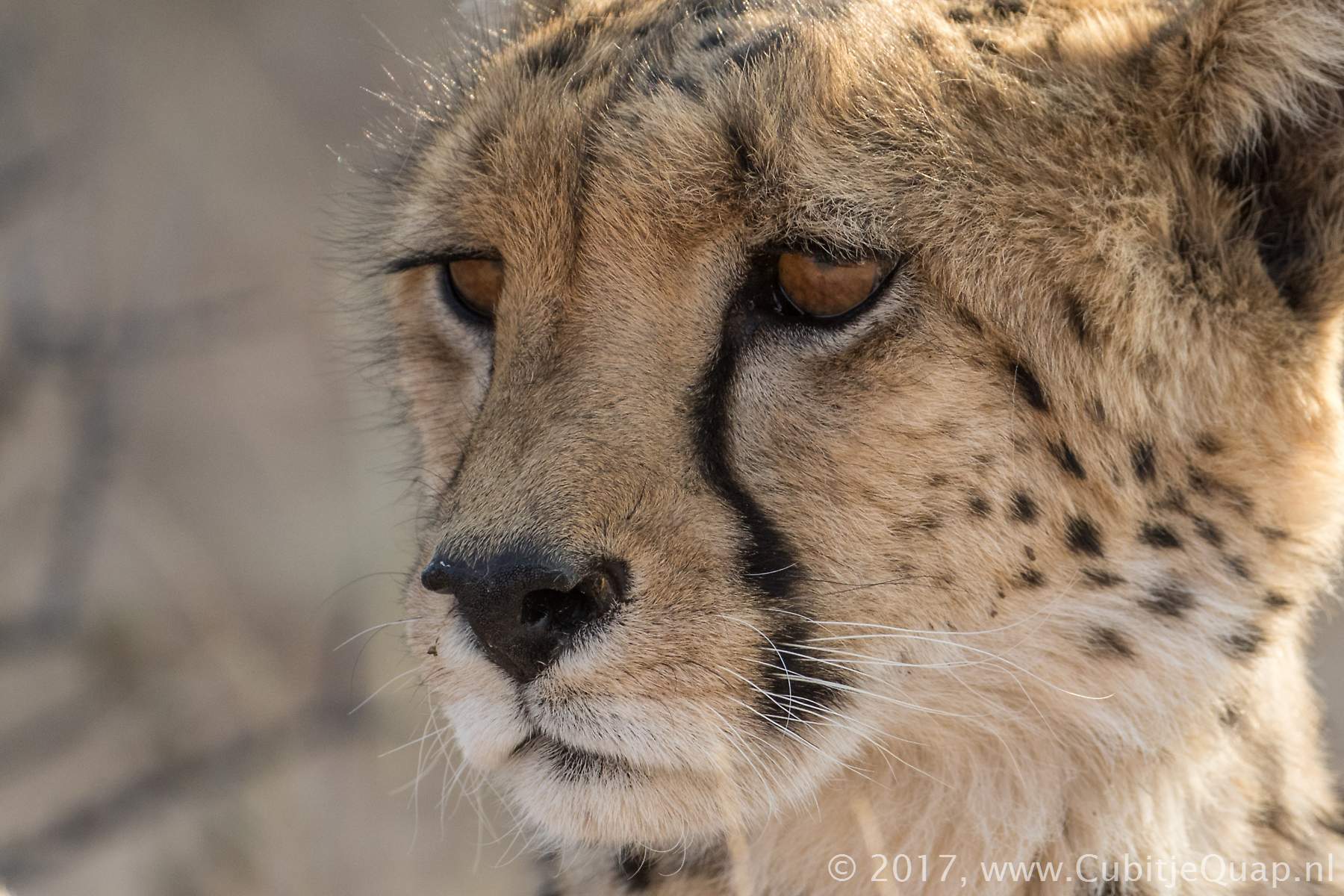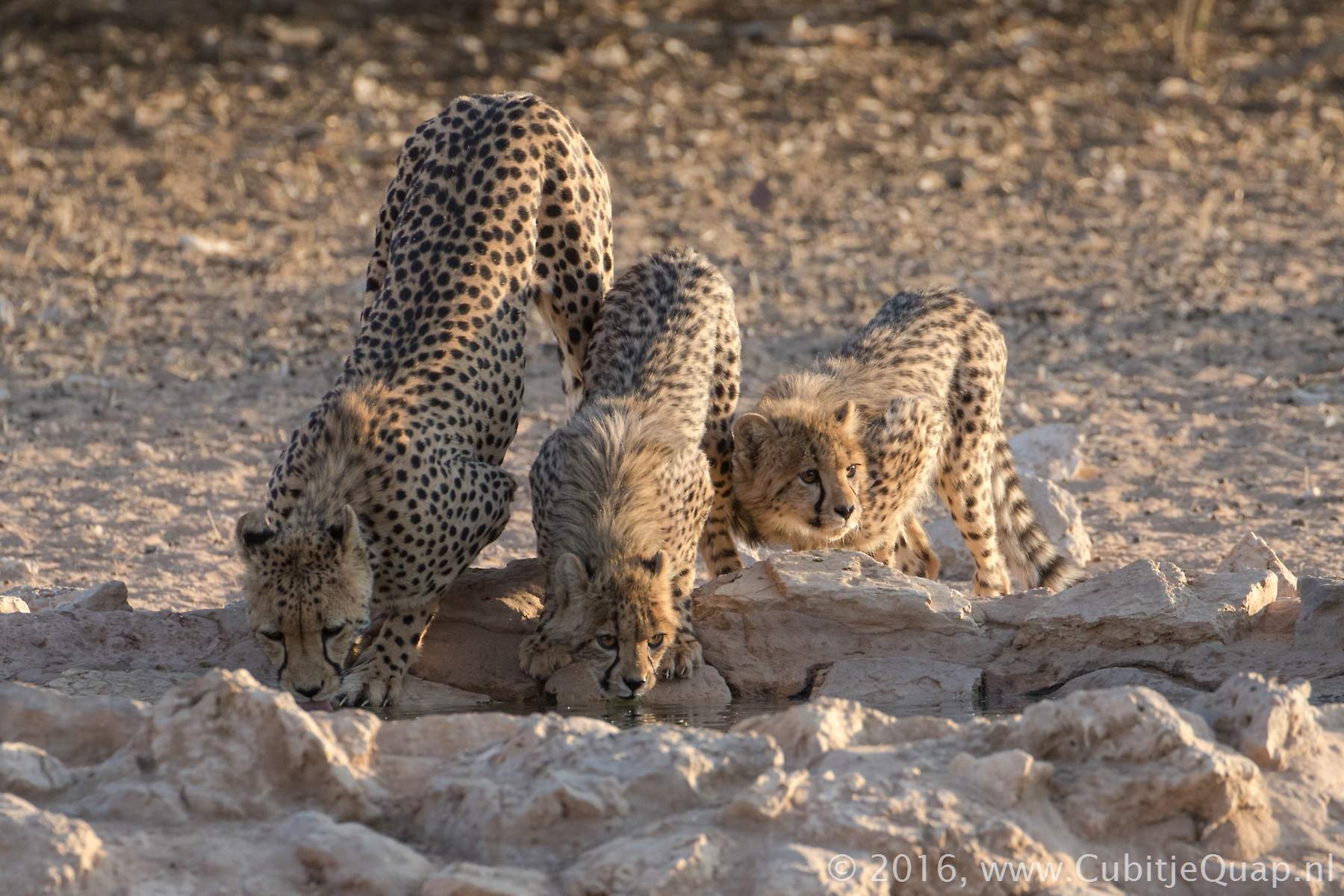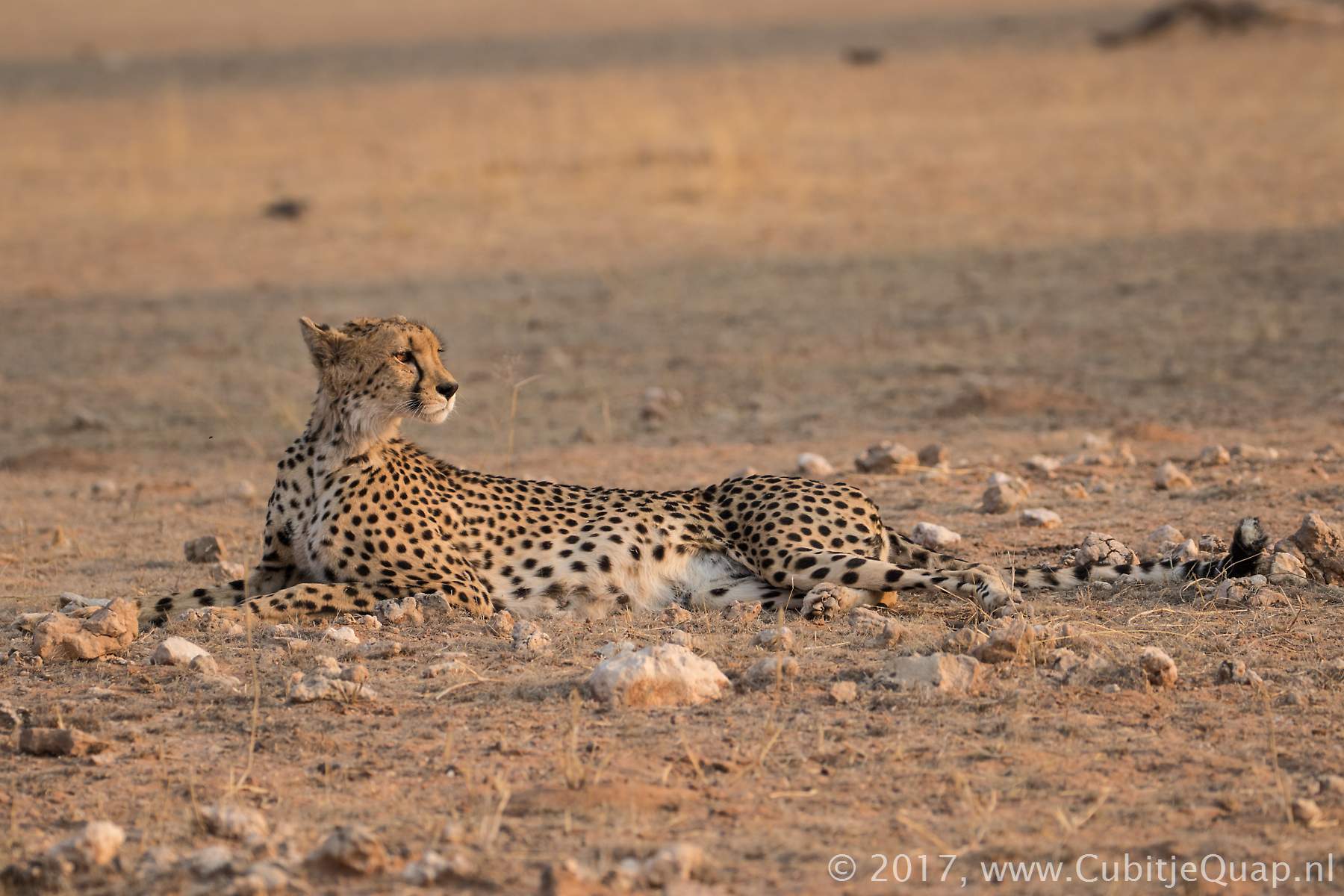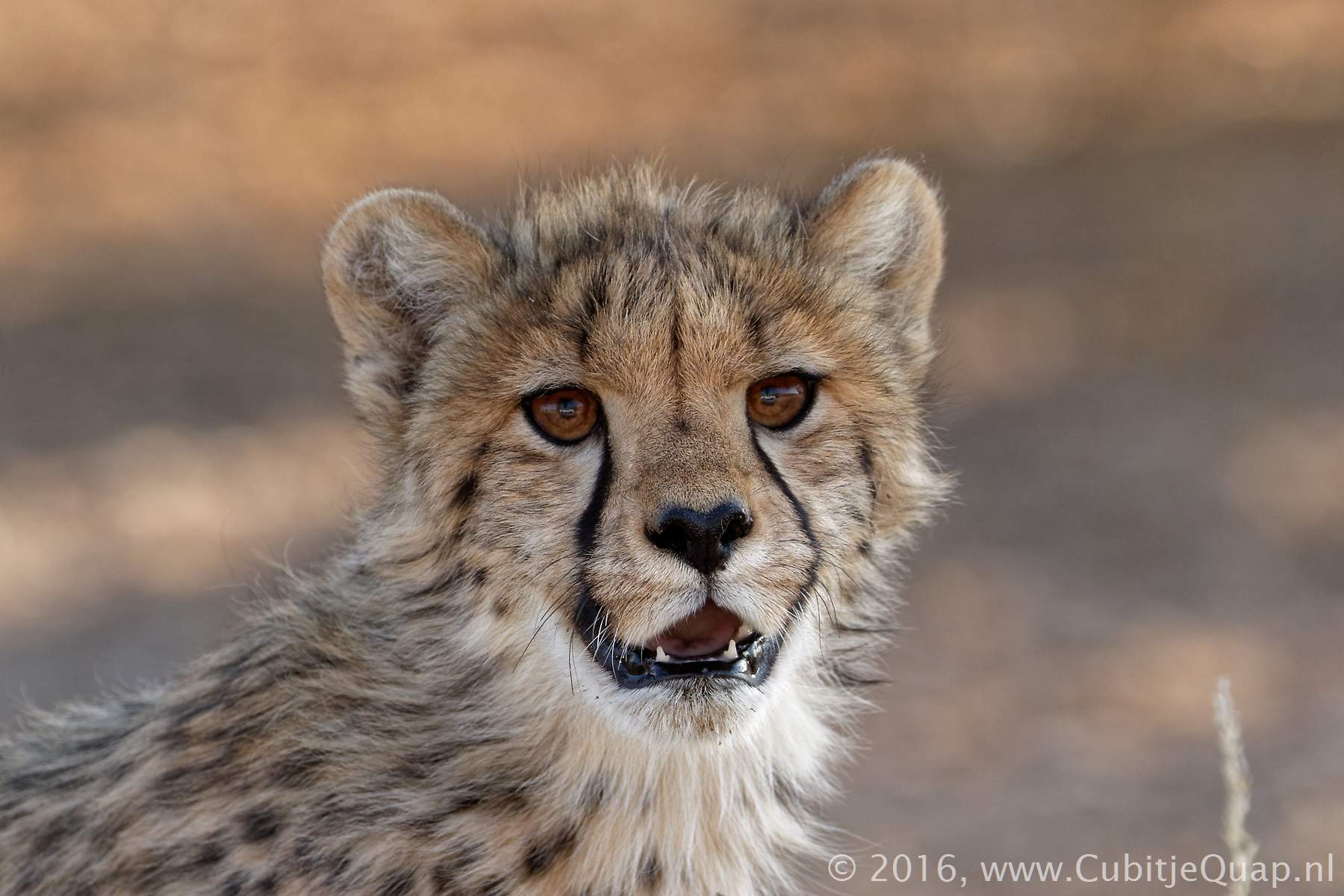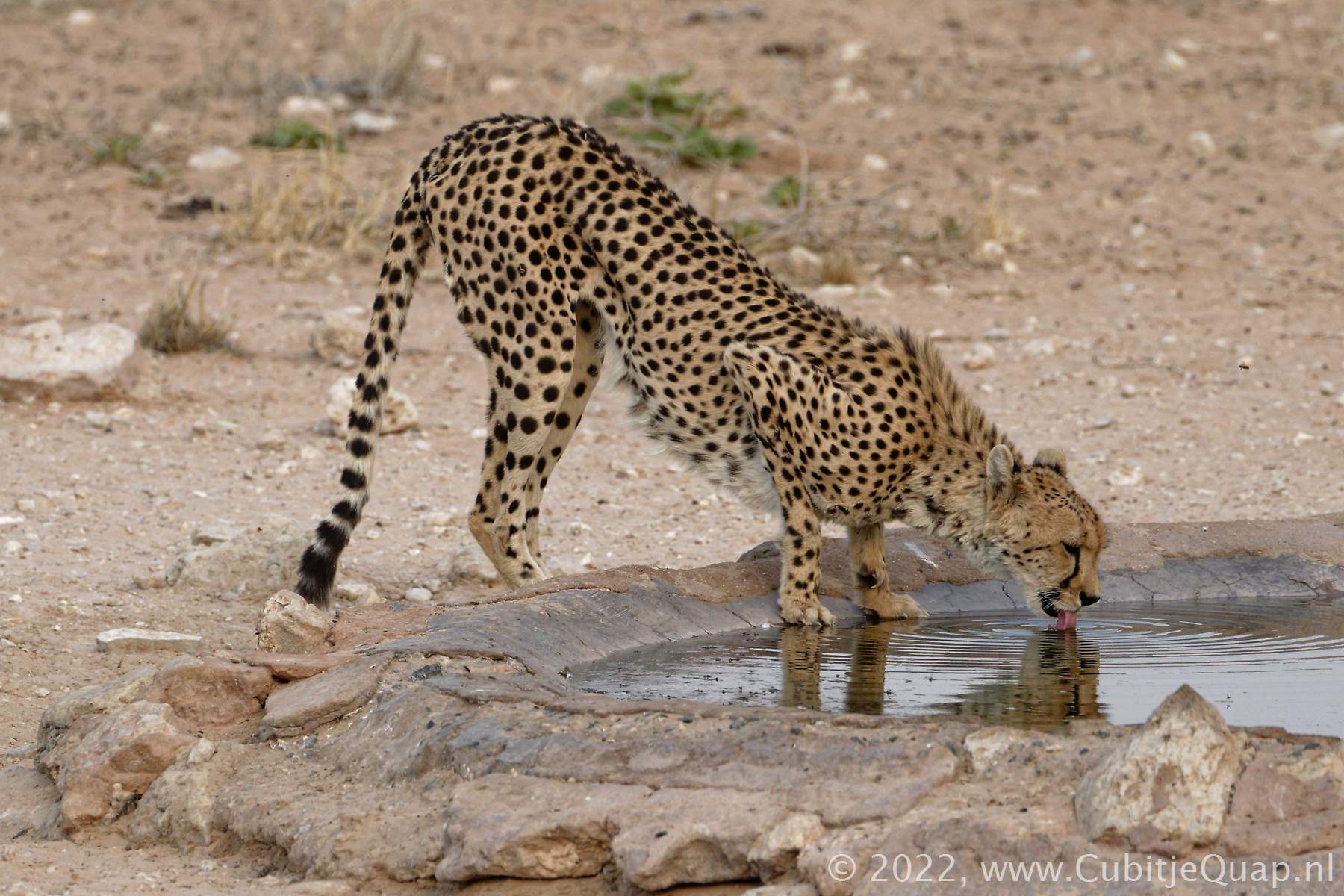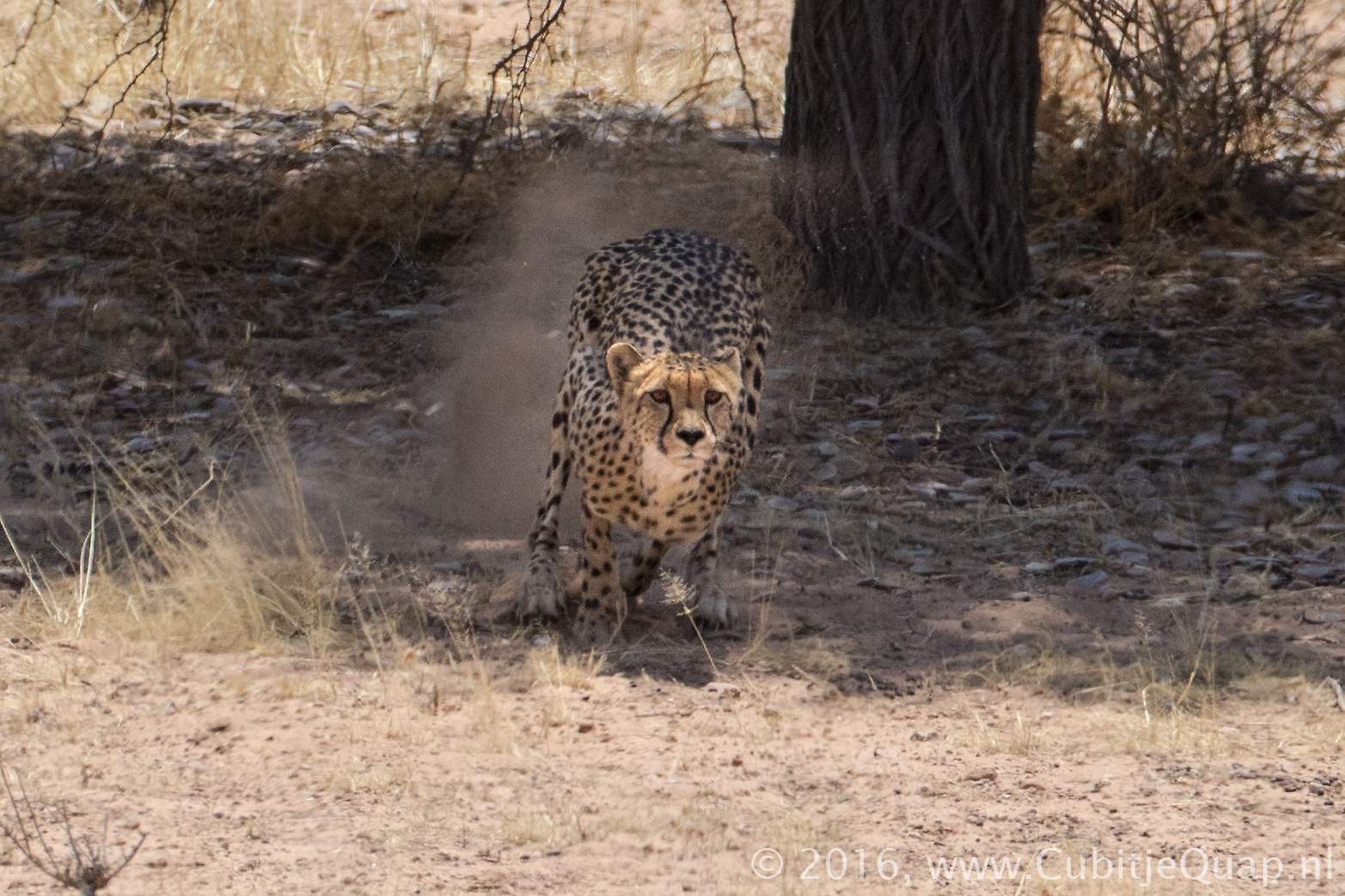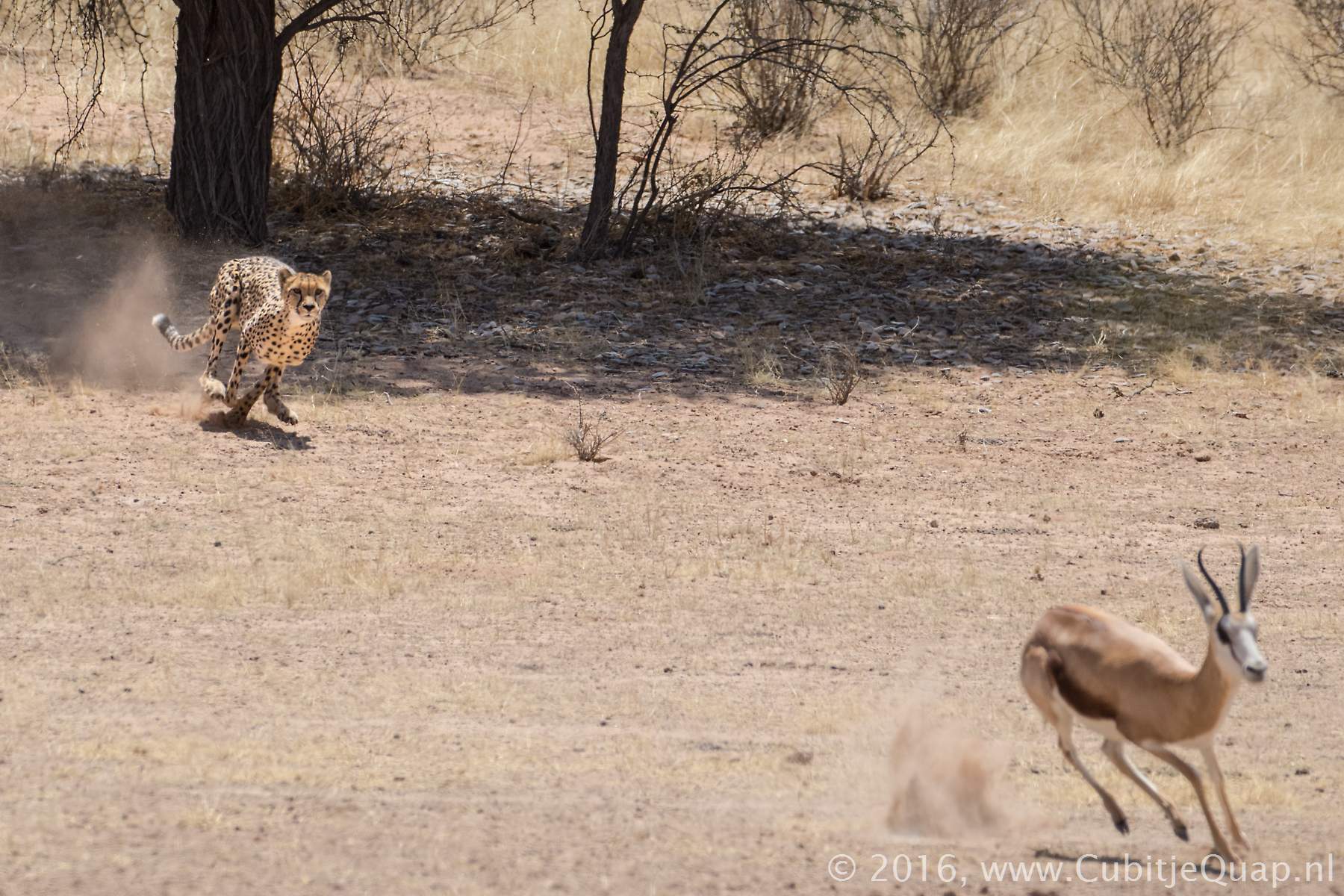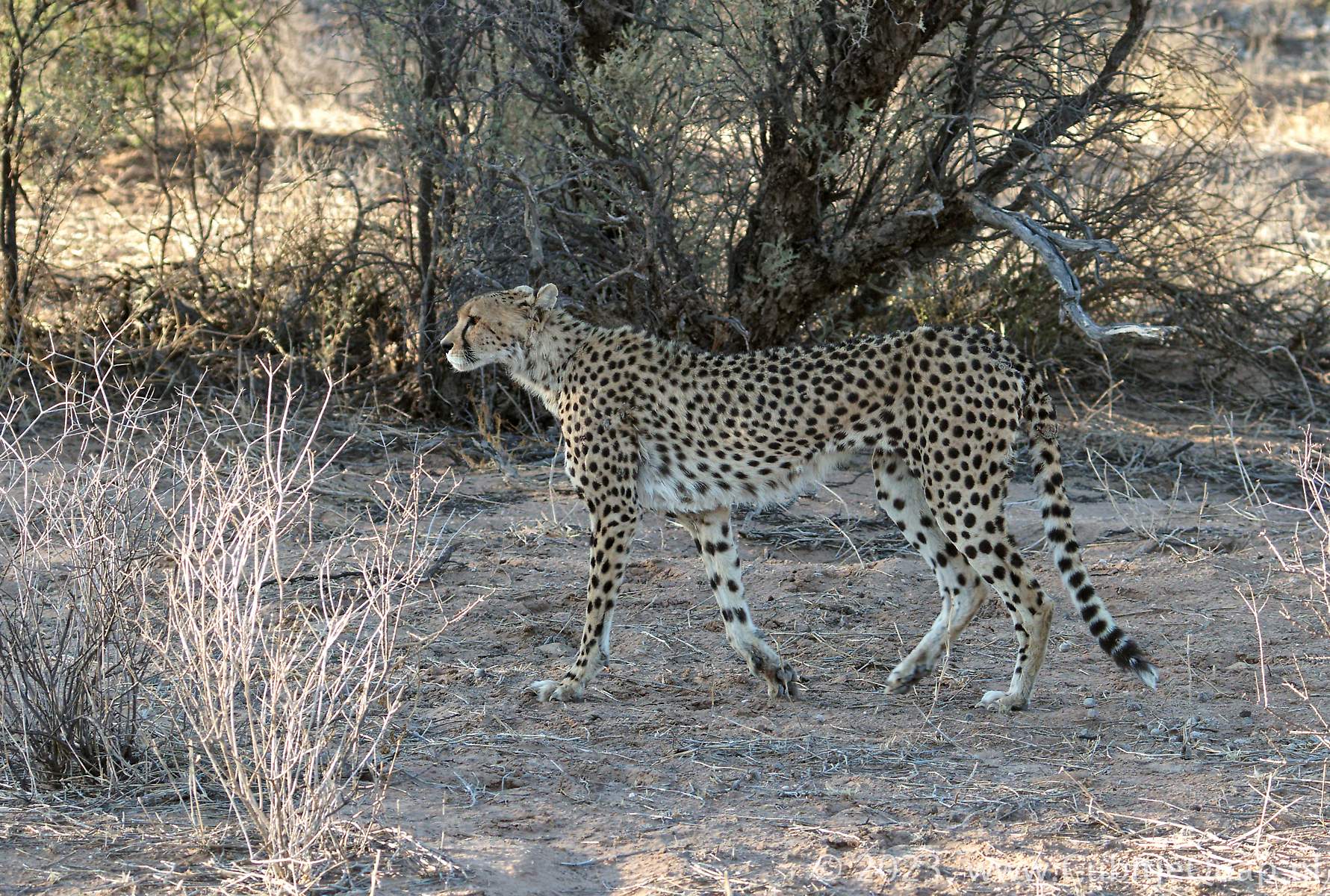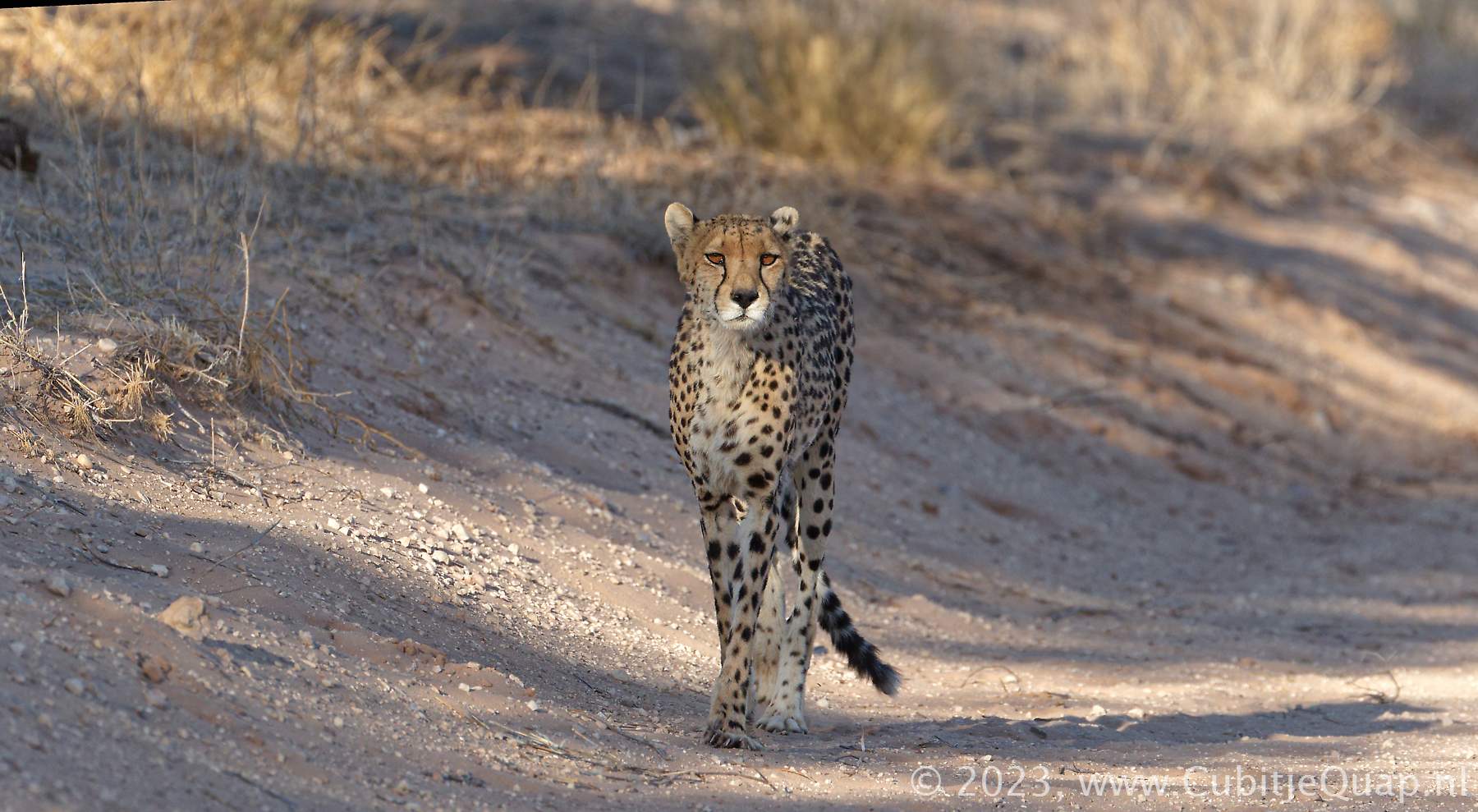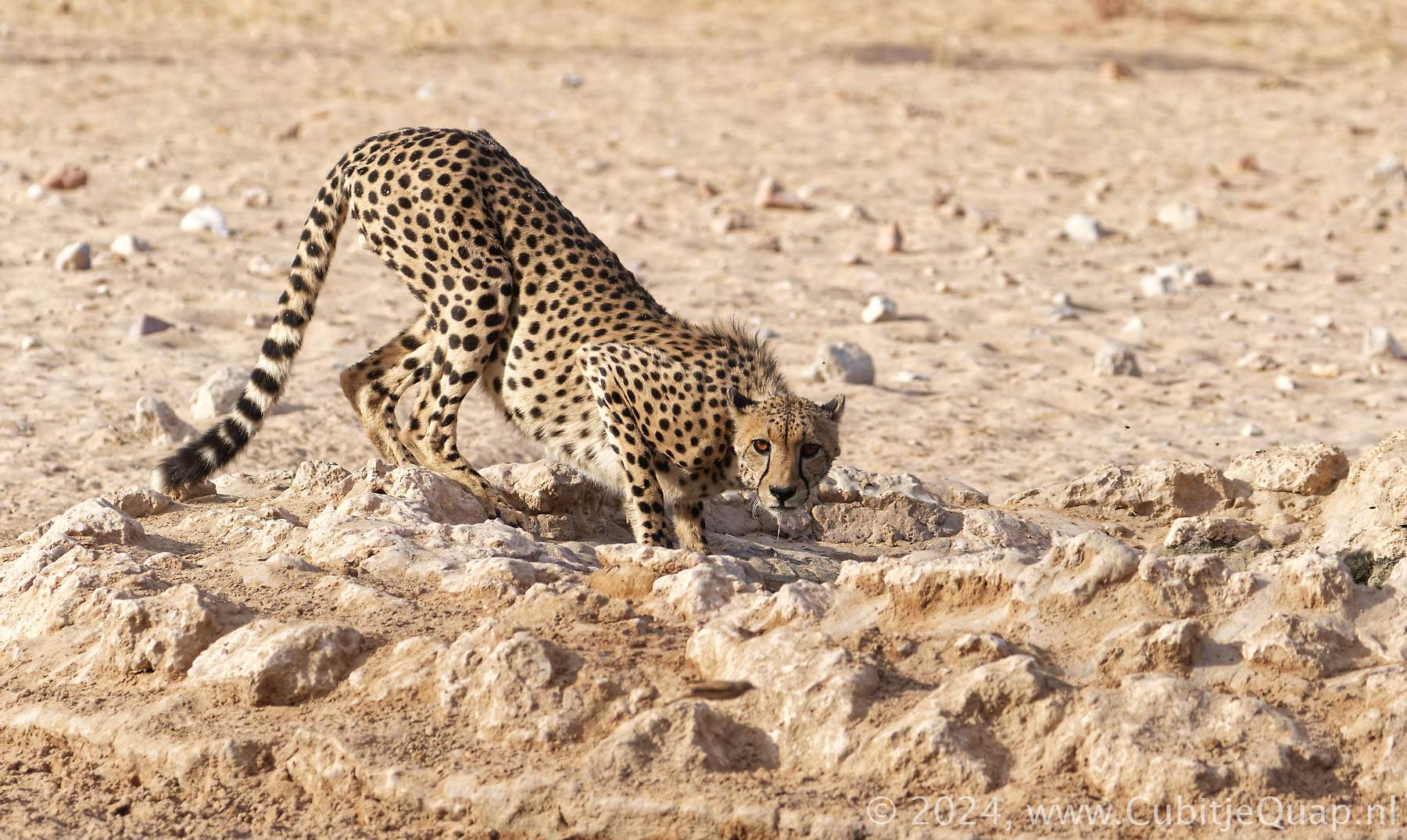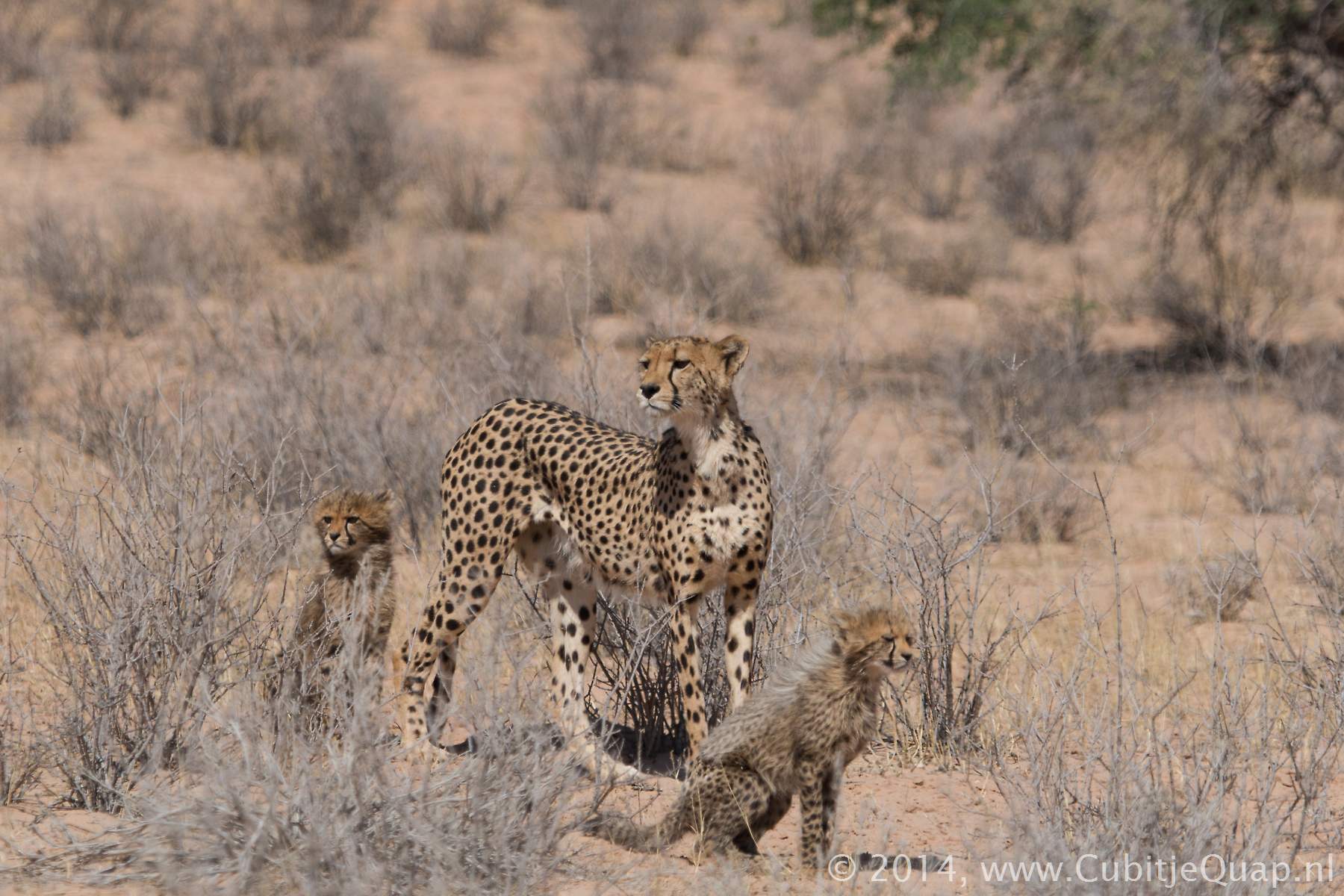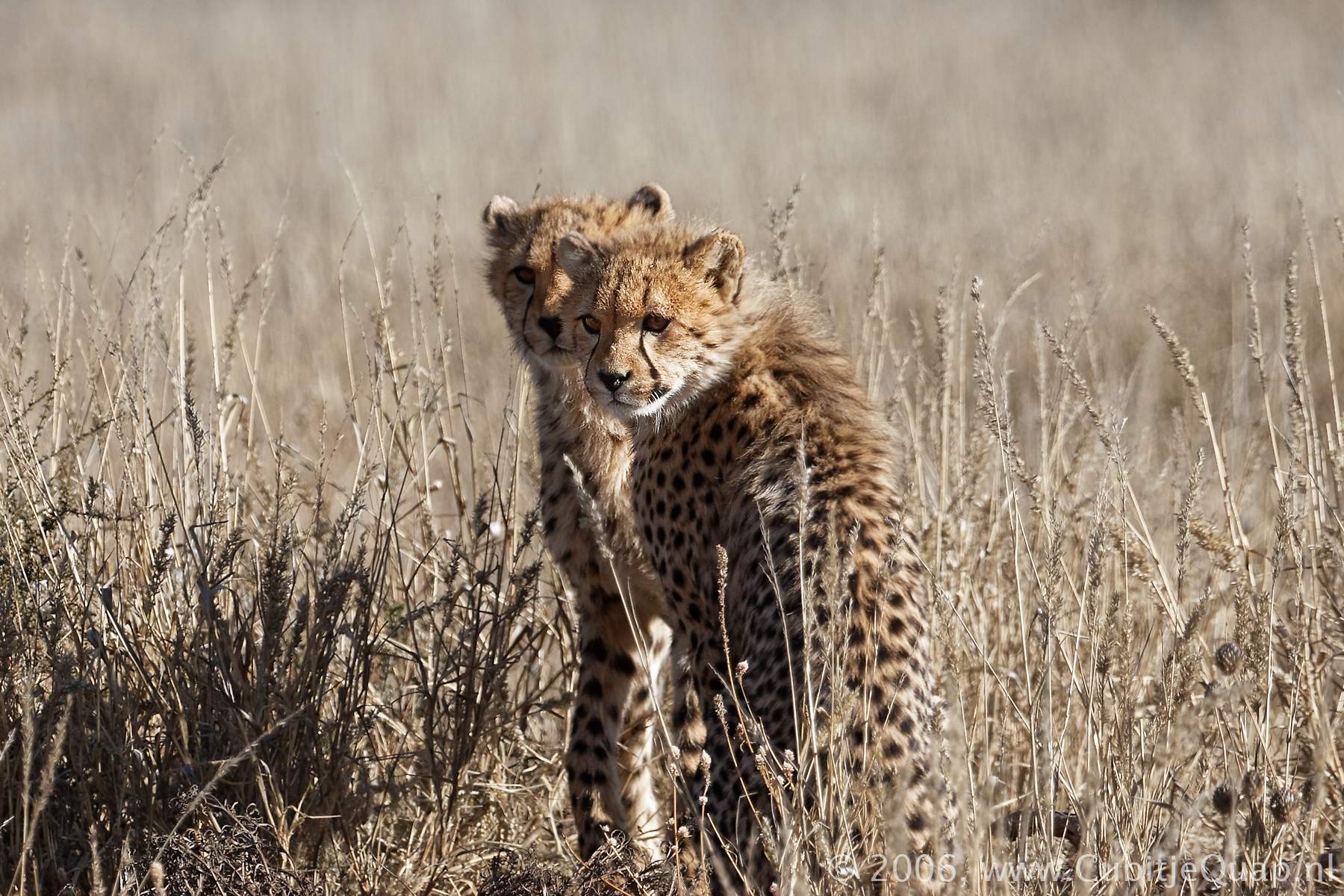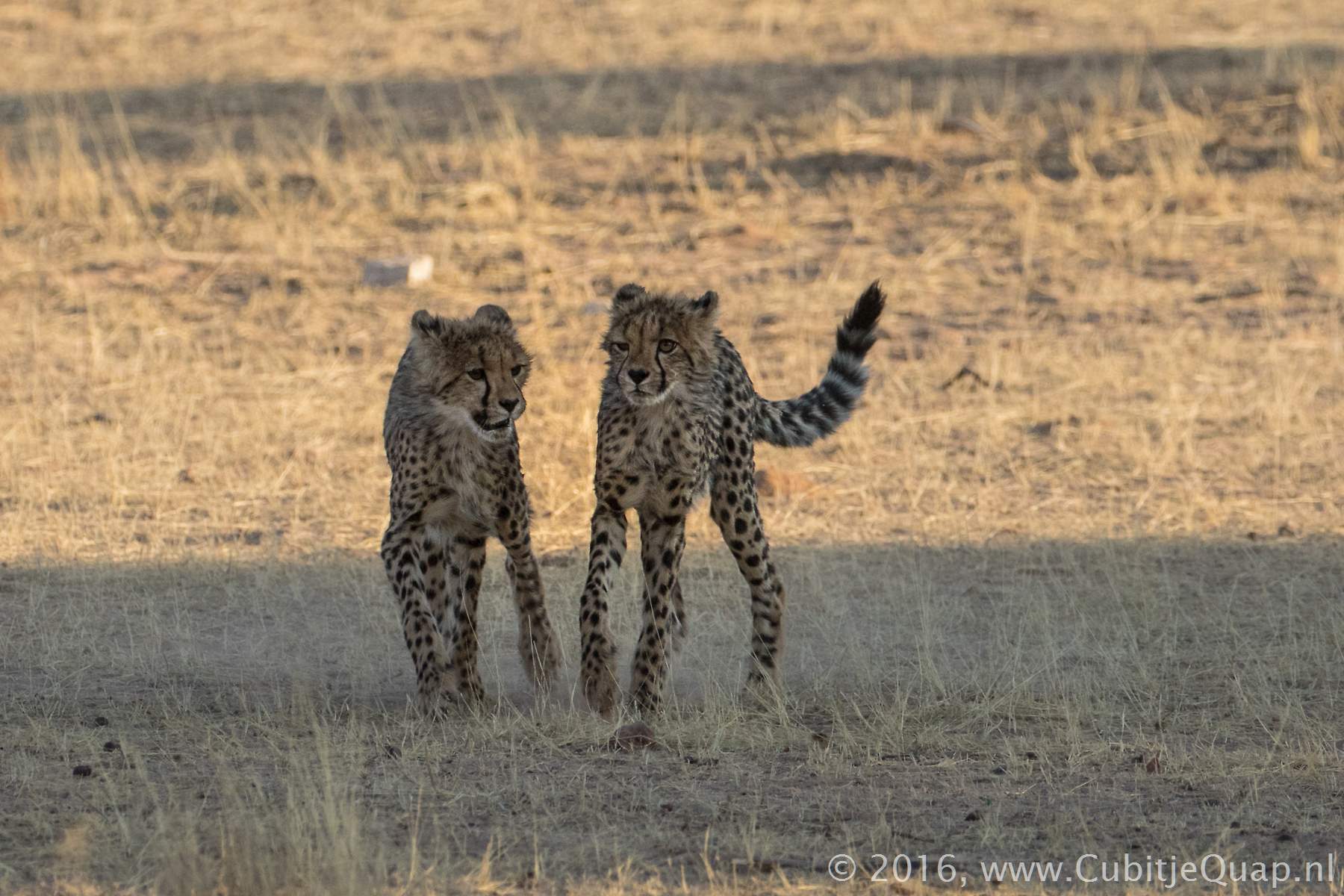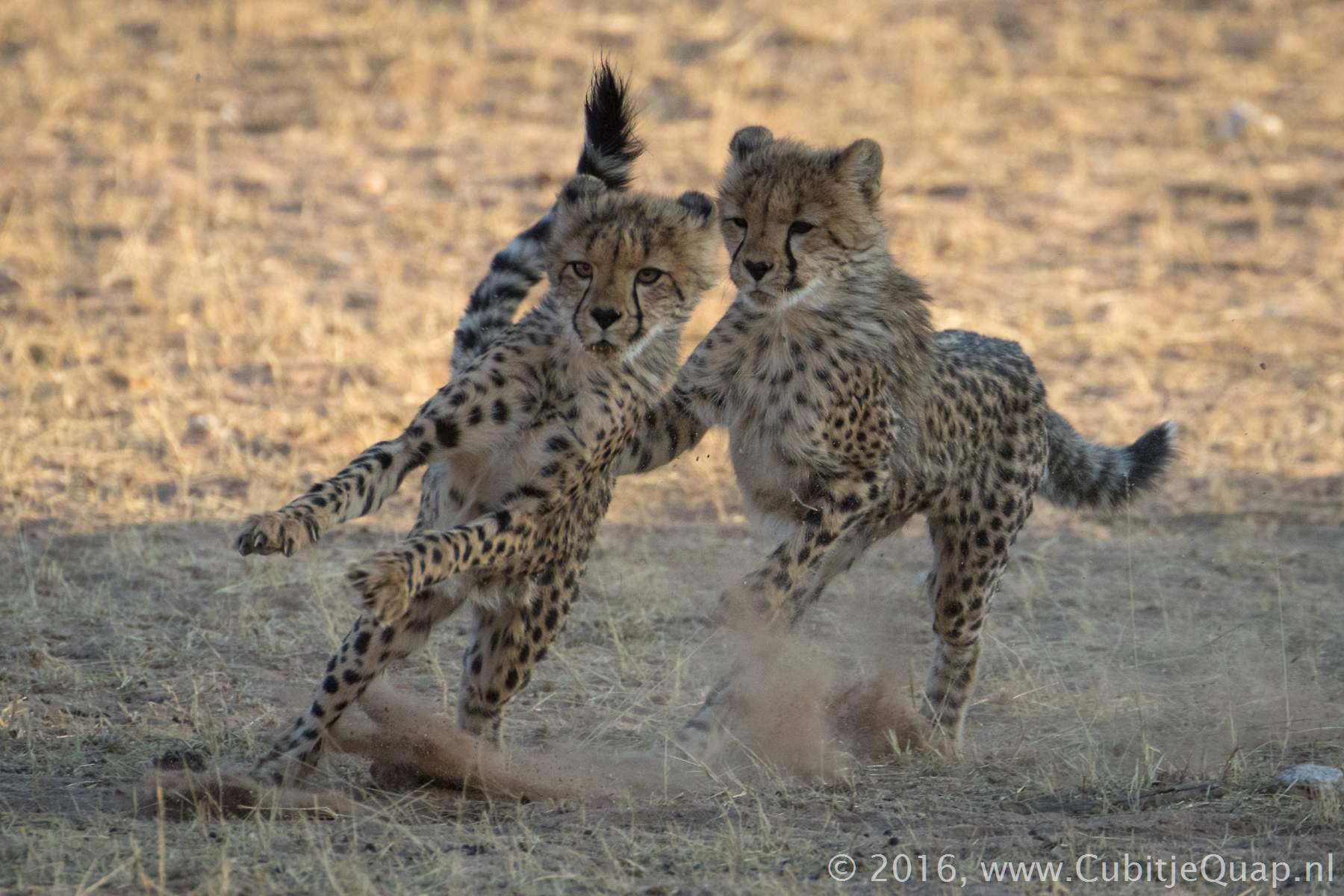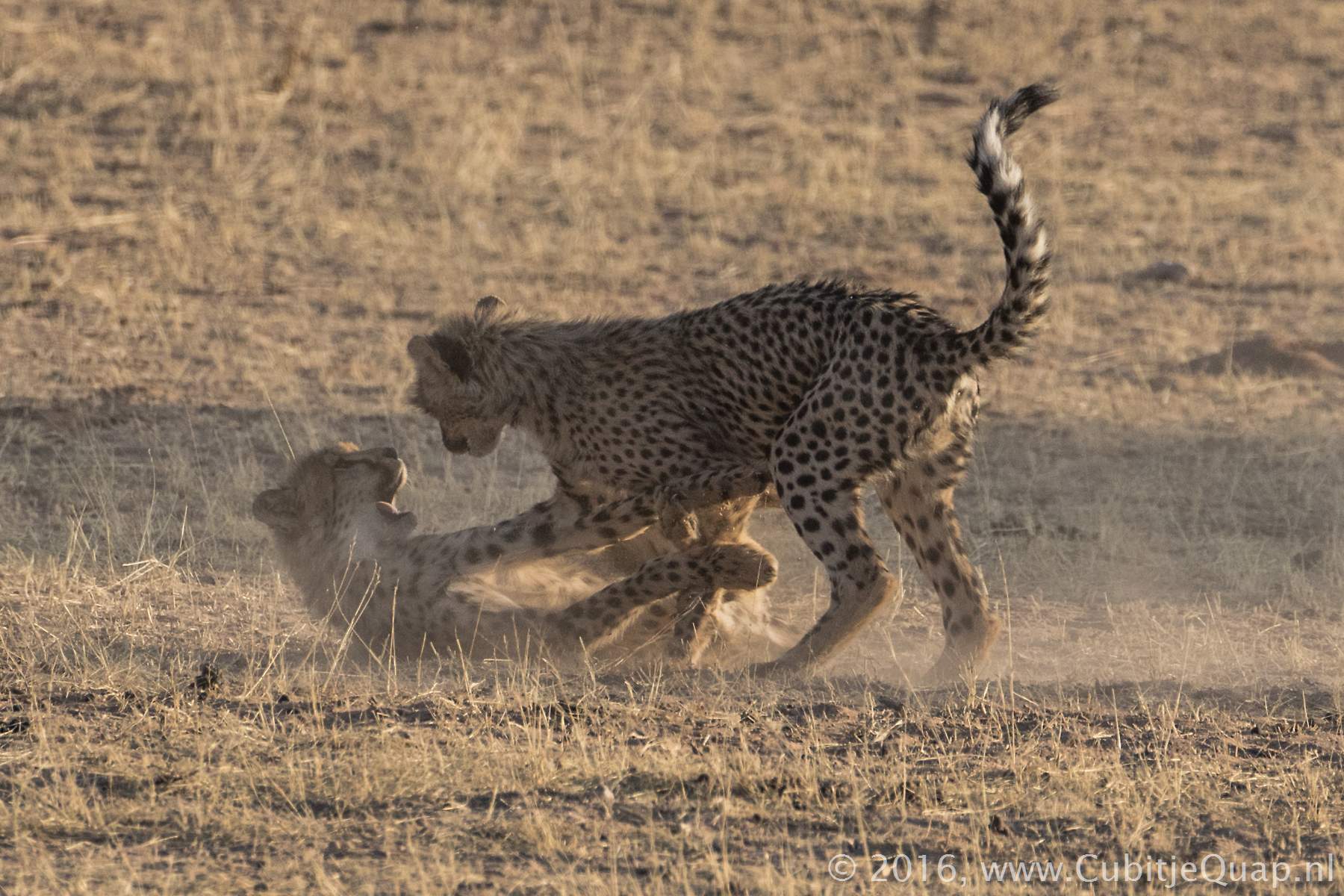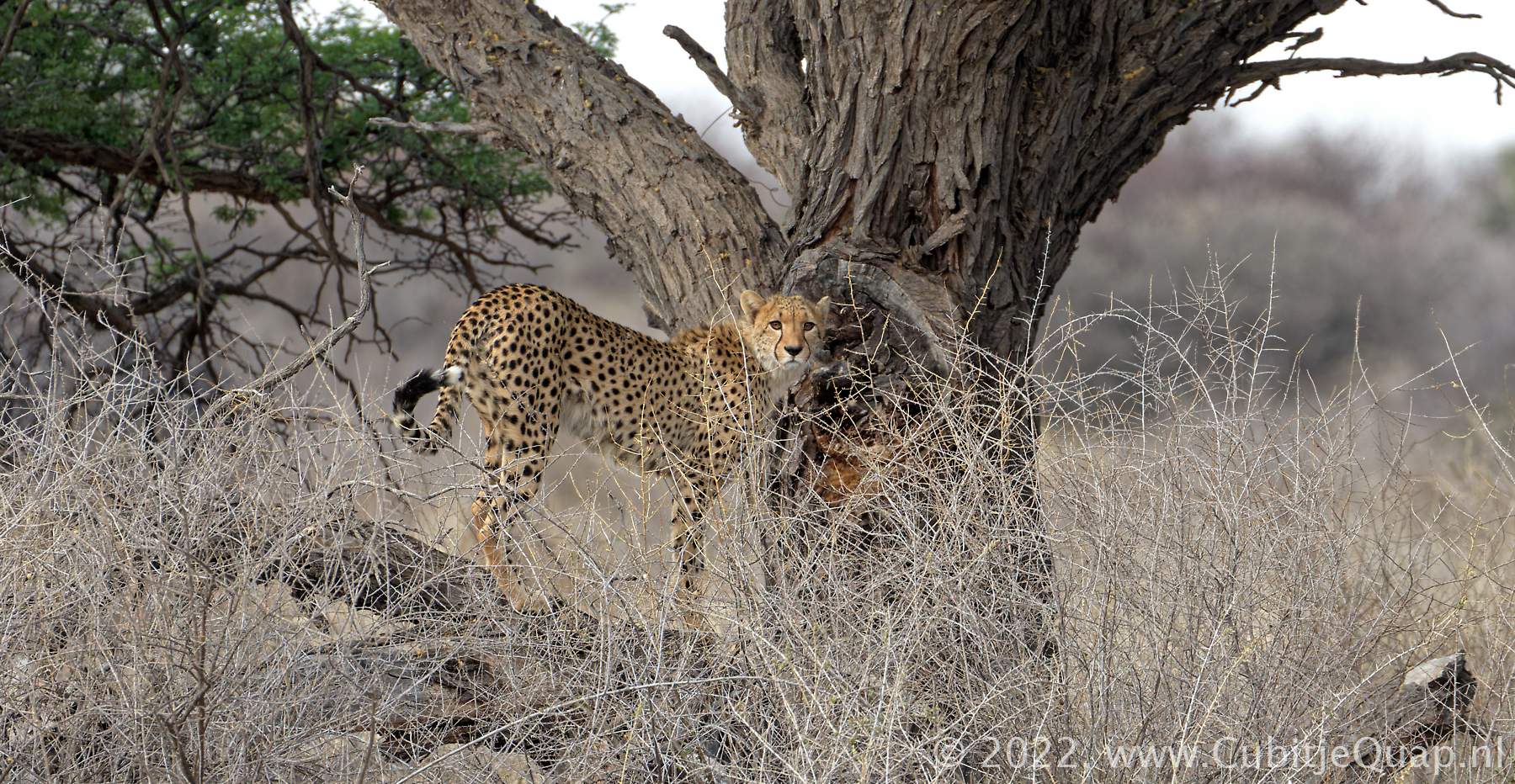Cheetah
Appearance
Total length 180 - 220 cm; tail 60 - 80 cm; shoulder height 80 cm; mass 40 - 60 kg
The cheetah, sometimes referred to as the 'greyhound of cats', is probably the most elegant member of the cat family. It is tall and slender, with long legs and a short muzzle with a rounded head. The body colour is off-white to pale fawn and is liberally dotted with black, rounded, spots more or less uniform in size. A clear black line (the 'tear-mark') runs from the inner corner of each eye to the corner of the mouth. Numerous small black spots are present on the forehead and top of the head. The tips of the ears are white. The long tail is black-ringed with a white tip. A short, erectile crest is situated on the back and sides. The cheetah is the only cat that does not have fully retractile claws and the impressions of the claws can be seen in their tracks. The well-publicized King Cheetah is merely an aberrant colour form, albeit an attractive one.
Habitat
Open savanna and light woodland, but also hilly country on occasion. The availability of drinking water is not essential.
Behaviour
The cheetah is normally seen singly, in pairs or small family parties consisting of female and cubs. It is principally diurnal, but tends to hunt in the cooler hours. Adult males move singly or in bachlor groups and females establish territories from which they will drive other females. Males are apparently not territorial and may move over areas held by several females. Favoured lying-up spots are usually raised above surrounding area and are urine-marked by both males and females. When hunting, cheetah stalk to within a short distance of their intended prey and then sprint for the kill. Although they may top speeds of more than 70 km per hour this can only be sustained for a few hunderd meters.
Food
Normally cheetah hunt medium-sized mammals up to a mass of about 60 kg, although if two or more cheetah hunt together larger prey may be overpowered. Antelope are the principal prey items. In the Kruger National Park the impala is the most important prey. It also catches birds up to the size of ostrich.
Africat foundation
Approximately 25 percent of the world population of cheetah lives in Namibia. Many of those cheetah live on farmland where they treaten livestock. This leads to conflict with the human population that has to earn a living of that farmland. Starting out primarily as an animal welfare organisation, The africat foundation was founded in 1991. It focusses on the long term conservation of large carnivores in Namibia.
Activities of the africat foundation include creating awareness and tolerance of large carnivores in the farming communities, educating youth about large carnivores, researching large carnivores and provide housing, treatment and care for orphaned and injured animals.
Interesting links
WikipediaAfricat foundationCheetah Identification Guides for Kgalagadi Transfrontier park

